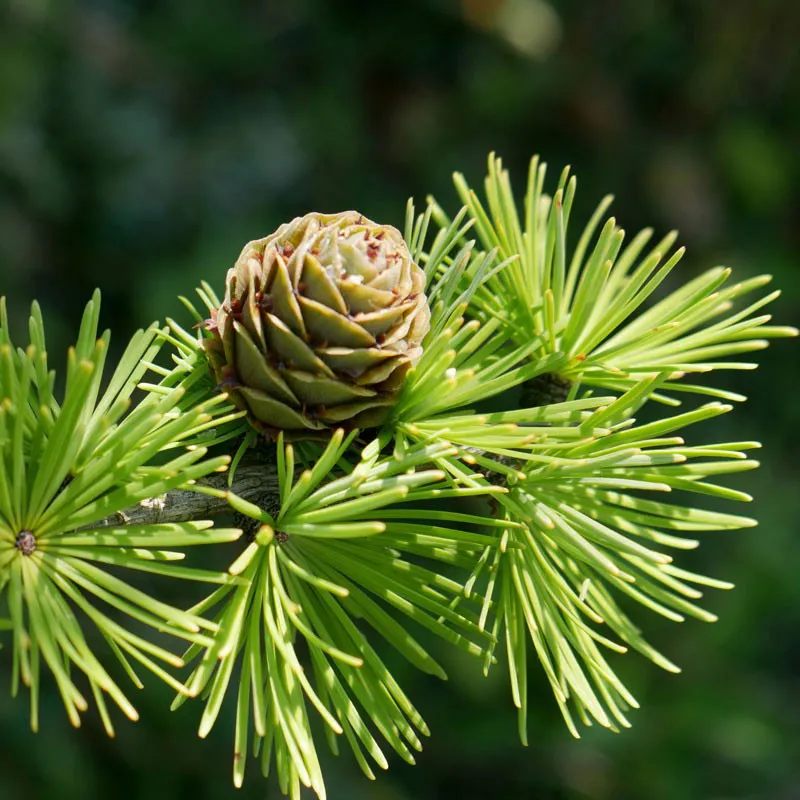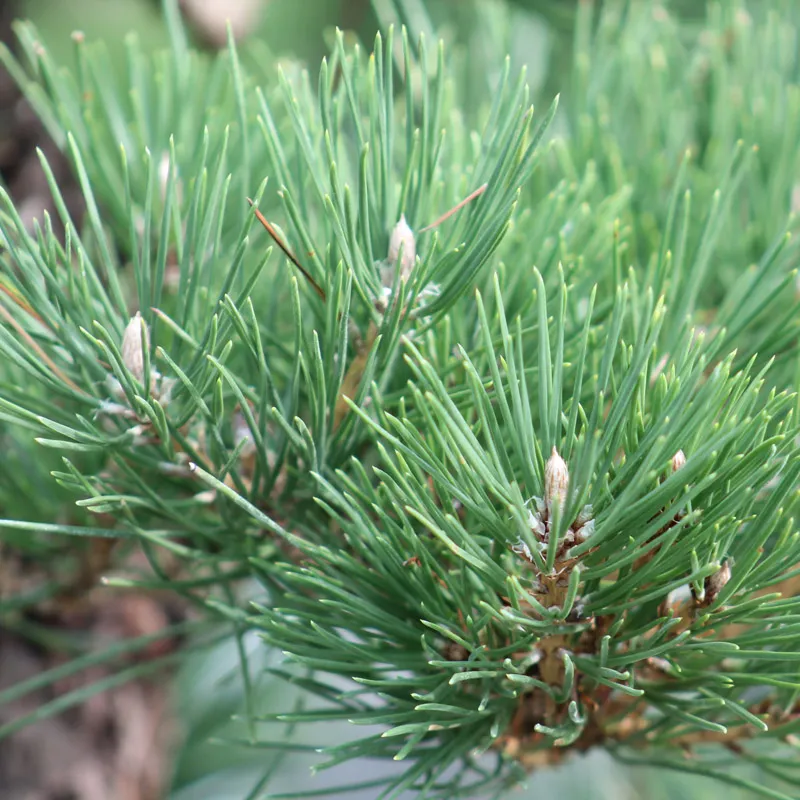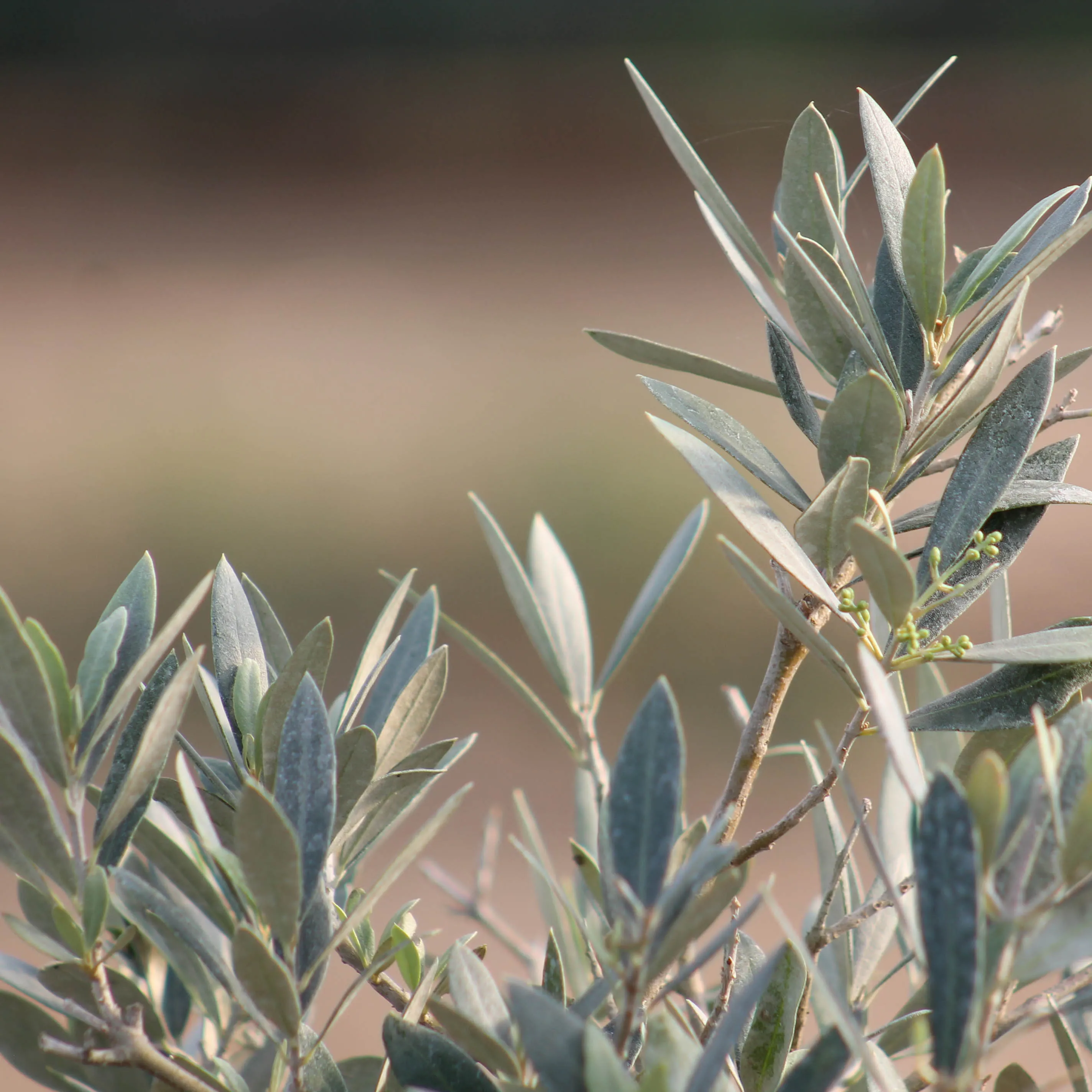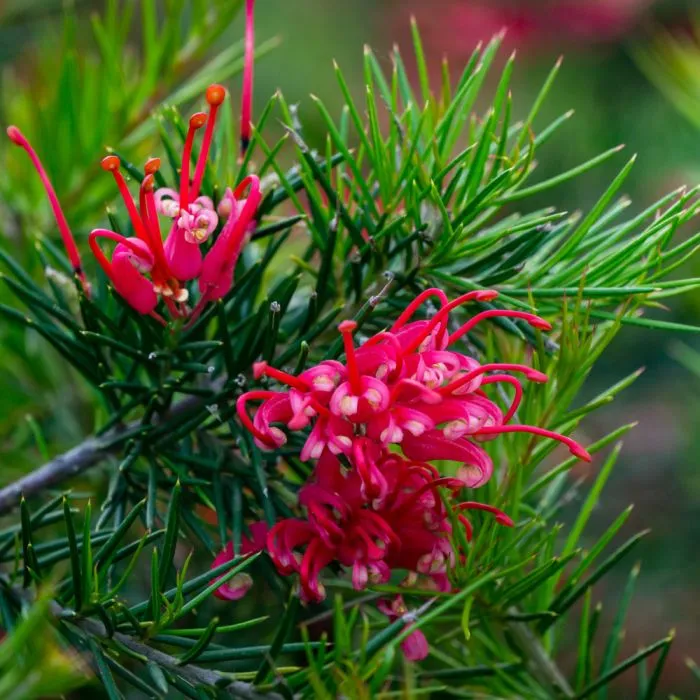In Japan, the garden is almost always the complement of a house, a temple or a palace. However, Japanese gardens have little in common with large geometric French gardens, or even with English gardens.
Japanese gardens are fascinating and enchanting with their incredible aesthetic appeal and relaxing atmosphere. However, many hobbyists do not dare to start creating this type of garden, often because it seems too complicated. And it's not enough to put a granite lantern next to a niwaki to create a state-of-the-art layout.
Japanese gardens have a particular history and evolution over the centuries. They also obey different patterns, and above all they are strongly imbued with symbolism and spirituality. Maybe that's what makes them hard to understand, but that's what makes them so exciting.
History of the Japanese Garden
The Japanese garden has its origins in the Chinese garden, which probably developed during the Han Dynasty (206 BC to 220 AD). During the 6th century, Japanese merchants trading with China admired these gardens and gradually brought back ideas, techniques, and styles of landscape arrangement.
Even though there are some similarities between the Chinese garden and the Japanese garden, the two have taken parallel routes, which sometimes converge, and then diverge again to have their own identity.
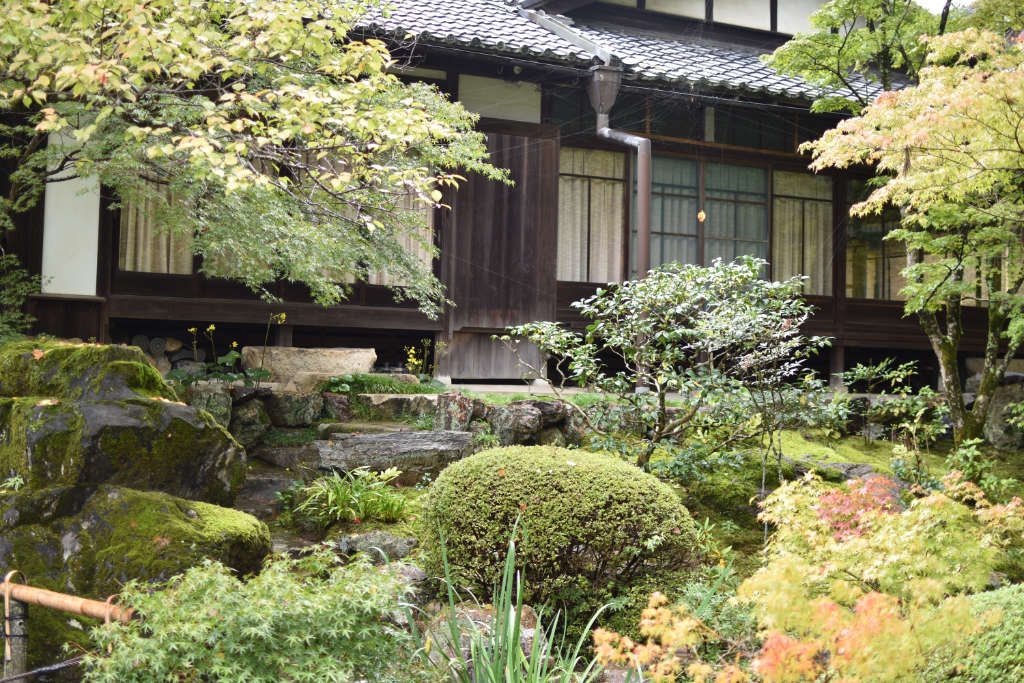
Japanese gardens also have their roots in the religion of Shintoism. The Japanese word for garden (NIWA) is said to mean a place that has been cleansed and purified in anticipation of the arrival of the KAMI (Shinto deity). Rocks, old trees, lakes, are considered the epitome of KAMI and have exerted a lasting influence in the design of Japanese gardens.
In the 7th century, Buddhism became the state religion in Japan, mixing with Shinto beliefs. The two cults still coexist, continuing their influences on the design of the gardens. Indeed, the Chinese garden, as for the Japanese garden, translates this need for Man to get closer to the beyond; the garden is to be a representation of heaven on Earth.
In the 8th century, during the Nara period, Japanese and Chinese gardens were quite close, as the influence of the Middle Kingdom was important in many fields, especially architecture. It was at this time that decorative elements such as bridges or fountains appeared in gardens.
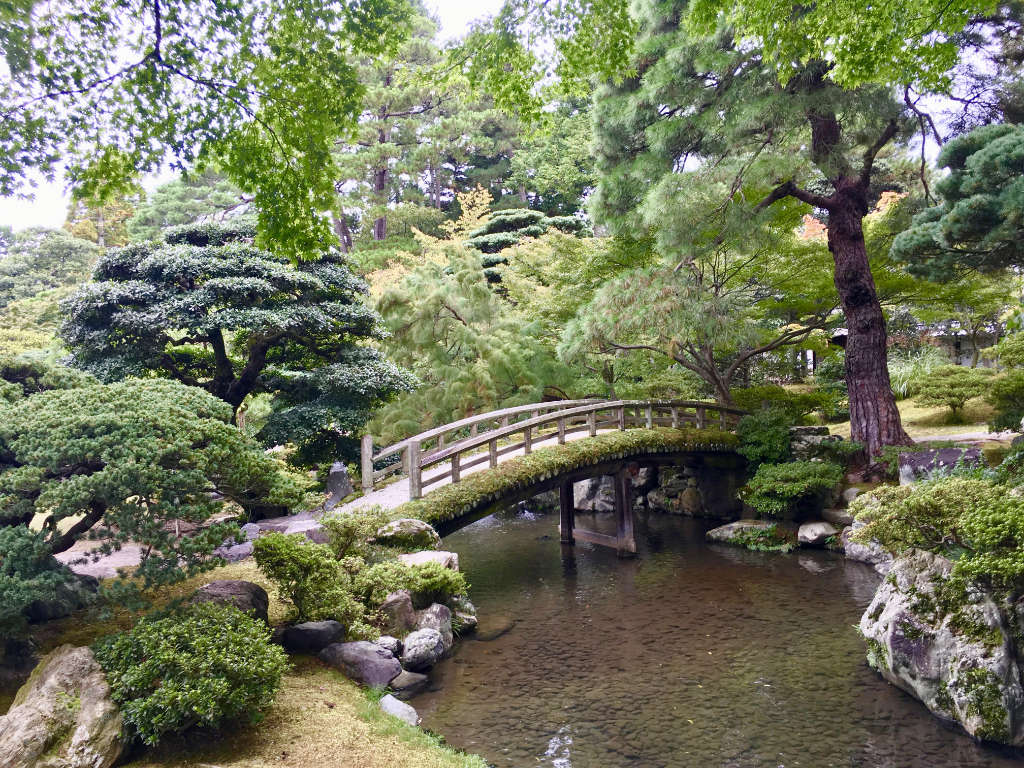
During the second half of the 11th century (Heian period), a major work was published: the Sakuteiki (or garden design book). It describes in detail different types of gardens, with technical and precise instructions for their implementation, including how the rocks should be arranged and oriented, what shapes the islands should have, etc. For the first time, the art of Japanese gardening could be transmitted in writing and not only orally.
Buddhism developed more and more within the Japanese archipelago, giving birth to the branch of Zen Buddhism and the creation of the first Zen gardens (or dry gardens), with a very refined style of layout where the elements could no longer be present but simply evoked or stylized. Over time, these dry gardens have lost their religious side and become simply aesthetic.
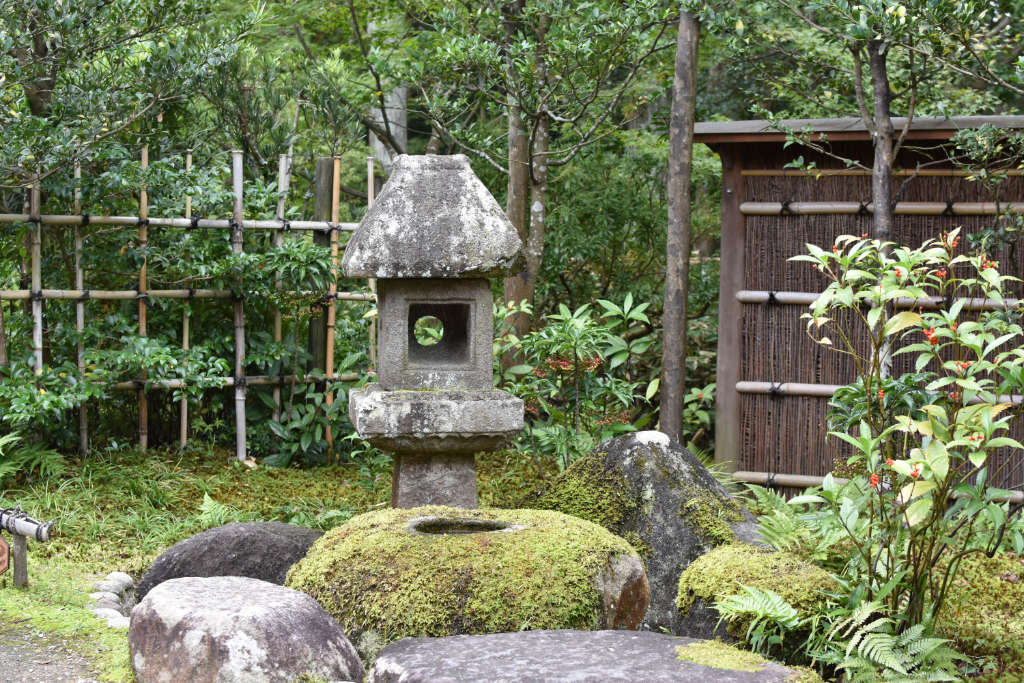
With the introduction of the tea ceremony in the 14th century, the CHANIWA (garden attached to the tea ceremony house) appeared. In fact, it's not so much a garden as a path leading to the CHASHITSU, the small house where tea is served. The purpose of the tea garden was to create a sense of solitude and detachment from the world, to prepare for the ceremony.
During the Edo period (1600-1868), when Japan was turning in on itself, promenade gardens appeared, the layout of which evoked certain famous landscapes. There are tea gardens, dry gardens and islands. Aesthetic considerations now predominate over religious considerations.
Today, the Japanese garden continues to evolve in small contemporary touches, even if it still rests on its historical foundations. The whole world admires and envies these gardens, which inspire creations all over the world.
The Different Types of Japanese Gardens
In Japan, space, or lack thereof, is always a consideration, and as a result, gardens are often created as miniaturized landscapes. A small yard, a balcony, or even a corner in front of a window is enough to evoke something bigger. In fact, one of the reasons why bonsai art is popular in Japan is that sometimes the space is so limited that gardens have to be brought indoors.
Thus, there is not one Japanese garden, but several types of Japanese gardens. Depending on the available surface area, the exposure of the land and his personal aspirations, one will be chosen rather than another. If the size allows it, it is possible to have several Japanese gardens cohabit in a single space.
SHINDEN ZIKURI: The Shinden Style Garden
This type of garden is certainly "the least Japanese of Japanese gardens" but, dating from the Heian period (794-1185), it is also the oldest. It is strongly inspired by Chinese " island-pond " style gardens. None of them remain today in their original form, although parts of these gardens still exist.
The SHINDEN-style garden is usually large, with a series of pavilions arranged in a U-shape, as well as an imposing pond with an island at its center. These pleasure gardens were primarily designed to entertain the aristocracy of the time, who could admire them from the buildings.
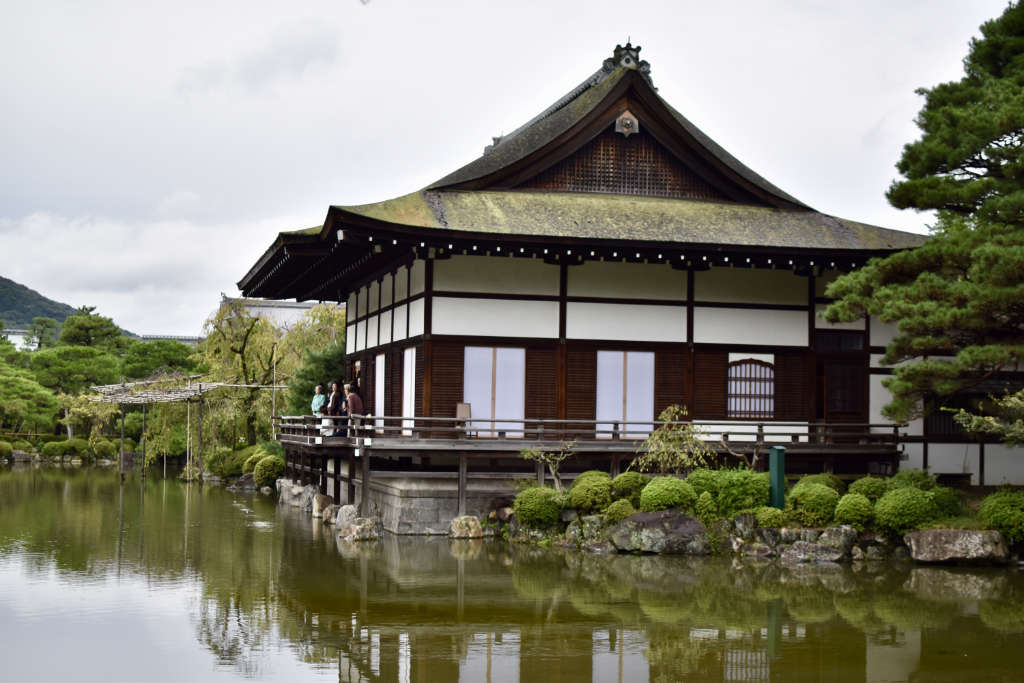
These gardens were an inspiration from nature, a sublimation of nature within a smaller space, with a very marked representation of the seasons. They are often separated into four parts, each associated with a cardinal point and a season. The influence of Feng Shui as well as Yin and Yang was very present. Each man-made arrangement had to be positioned in the right place, so as not to disturb the energy balance (氣, KI in Japanese, IQ in Chinese). Respecting these precautions was above all to ensure that the owner of the place could live a quiet, long and prosperous life.
Little by little, the Chinese inspiration gave way to a more Japanese interpretation, with the representation of more local landscapes. During the 9th and 10th centuries, the genesis of a purely Japanese aesthetic began to shake up the rules.
KAIYUSHIKI: The Promenade Garden
These gardens are usually large and belonged to great daimyō lords. Mostly dating back to the Edo period, they were built at a time when Japan was done with its power struggles, all provinces were unified again.
But if the struggles between the lords were no longer military, they became political and the gardens served to show their power. Old SHINDEN-type gardens were enlarged and new ones were laid out.
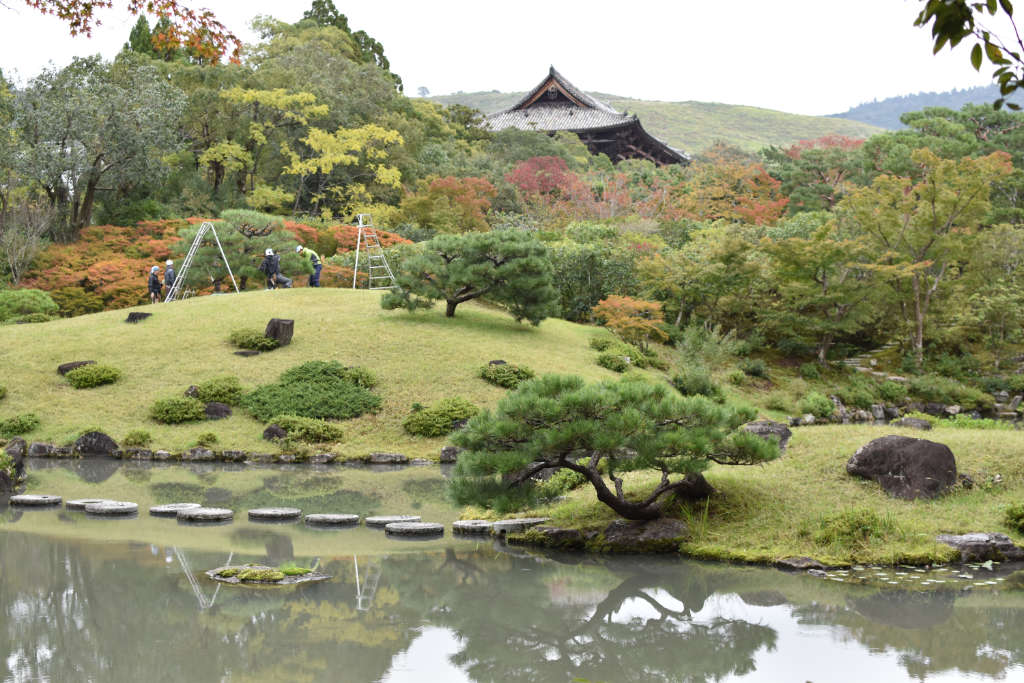
The landscape is completely shaped, creating hills, ponds and islands to sometimes recreate the "image " of landscapes from other provinces or famous tourist places. This real appetite for travel of the Japanese will strongly influence garden designers, especially with the technique of the "borrowed landscape" (SHAKKEI 借景) which consists of integrating the background of the surrounding landscapes into the garden, thus giving it the impression of being much larger than it actually is.
The sacredness that can be found in other types of gardens has completely disappeared here. They are purely aesthetically pleasing. The rocks are no longer evocative of deities, but rather the graphic aspect of their arrangement is highlighted.
However, the link between Man and nature remains very present; The garden is above all a celebration of nature at its most beautiful, it seeks to express an emotion. Trees and shrubs are carefully pruned, plants with remarkable blooms or foliage (maples, cherry trees) are planted to mark the passing of the seasons and give rise to festivities.
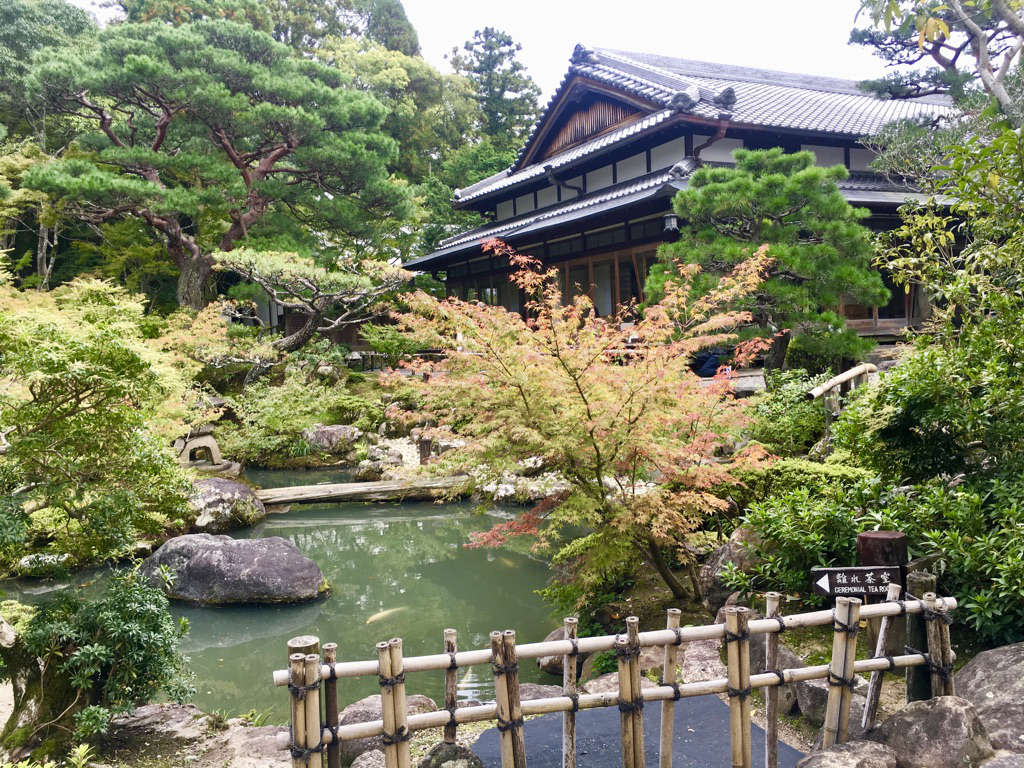
The promenade garden gradually incorporated elements from other types of gardens, including the tea garden, with large stone lanterns along the paths, small ponds, paved stone paths. Sometimes even a tea garden or a dry garden is integrated into a part. These gardens then lose their spiritual essence in favour of a purely aesthetic and playful interest.
KAIYUSHIKI gardens will thus evolve into a watered-down version of other types of Japanese gardens, borrowing certain techniques and aesthetic concepts from them. This was the beginning of the more modern gardens that appeared after the Meiji Restoration, before a return to more traditional values at the end of the 20th century.
KARESANSUI: The Zen Garden
Also known as the dry garden, it is the most iconic Japanese garden and the graphic garden par excellence. Usually set in a small enclosed space, it illustrates the Japanese people's taste for symbolism and minimalism.
The Zen garden appeared from the 16th century, and was described above all as religious, because it was in the monasteries of the Zen Buddhist schools that it first developed. The word Zen (禅) means meditation.
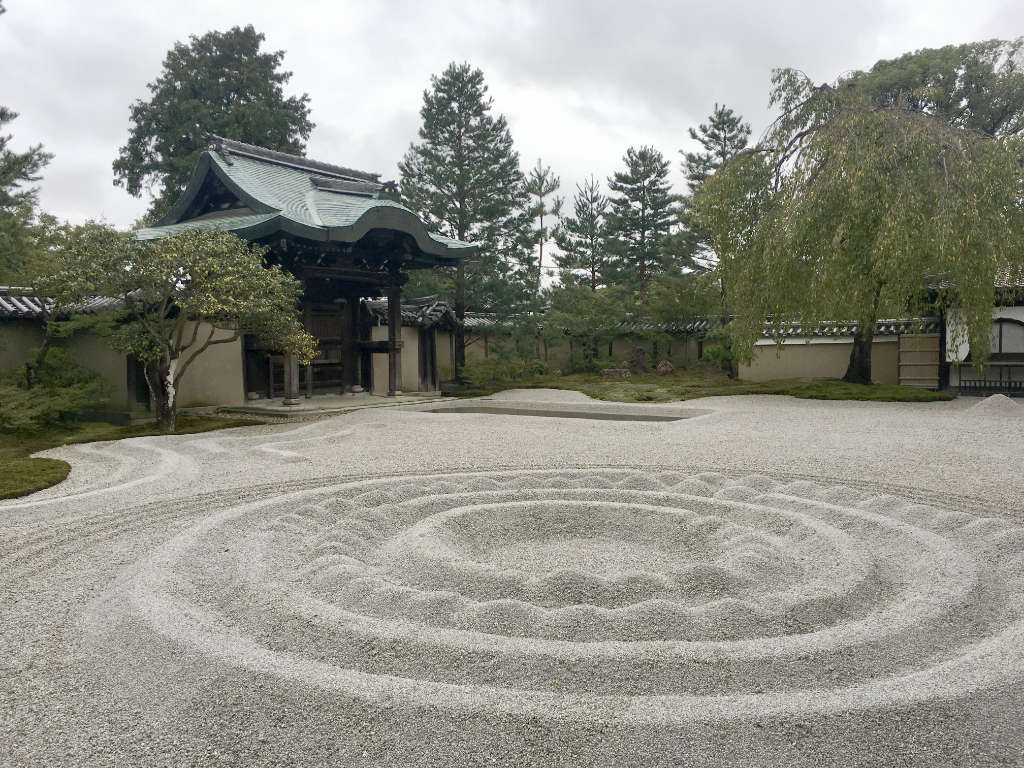
At a time when Japan is ravaged by wars and unrest, when every day life rubs shoulders with death, the military has found itself in certain precepts of Zen, in particular that Man is the sole master of his destiny. Meditation then plays an increasingly important role, leading a monk to a state of enlightenment and a warrior to victory.
The word KARESANSUI (枯山水) is composed of 3 characters 枯 (wither, dry up), 山 (mountain) and 水 (water). The mountain and the water are only symbolized here.
One of the essential characteristics of a Zen garden is the use of stones and the absence of water. This element, essential in the design of Japanese gardens, is just suggested by flat expanses covered with gravel, in the middle of which sit cleverly arranged stones surrounded by a little moss, in order to represent islands and a landscape.
Another characteristic of this type of garden is that it does not change, or very little, with the seasons. Time has no hold on him. As a result, KARESANSUI has few plants (conifers such as pines are preferred for their immutable appearance), if at all. It is first and foremost a mineral garden.
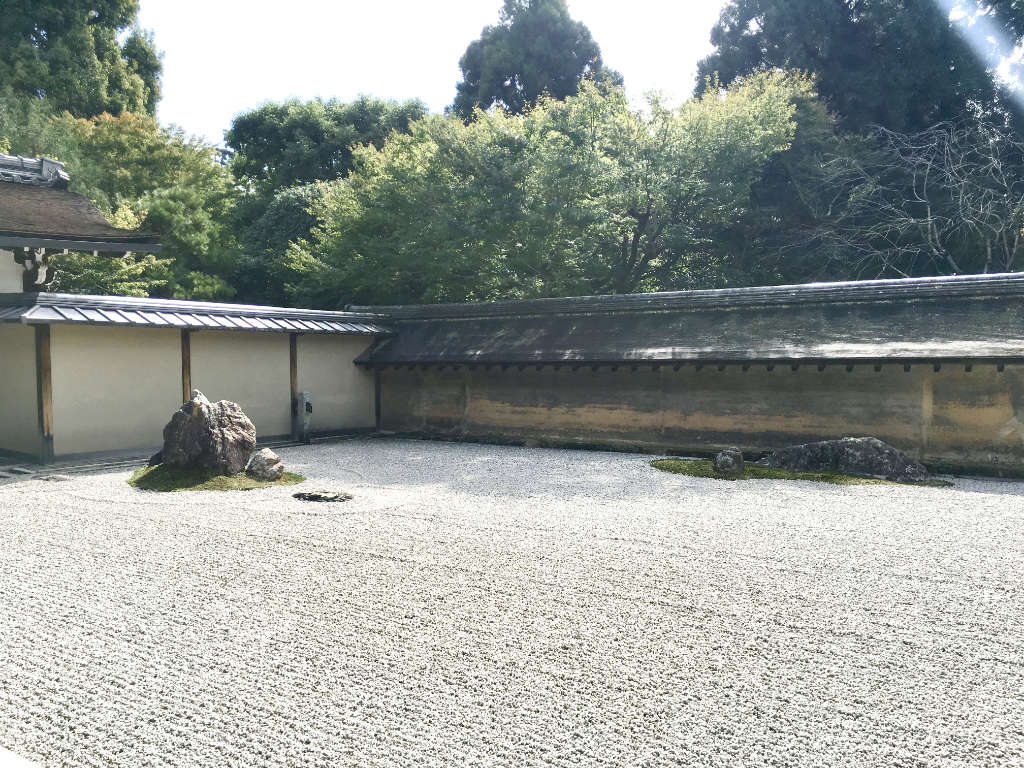
The purpose of the dry garden is not recreational. They are not designed to walk around but to observe it from one or more specific places. Moreover, it is rare to be able to physically enter these gardens; rather, it is the gaze that wanders through it while the observer stands at a distance.
They are therefore gardens of contemplation, but not necessarily of meditation. For it is not by looking at them that the monks exercise their ability to concentrate, but rather in their daily maintenance, such as raking the gravel, removing every pine leaf or needle that is found there, or maintaining the fine mosses.
CHANIWA, the tea garden
Also called ROJI (露地, literally " dew-covered ground"), this garden is closely linked to the tea ceremony that developed from the 14th century, during the Muromachi period. Tea culture has always held an important place in Japan's history, and it is gradually moving away from the Chinese model to become a true way of life (茶道 CHADO, the way of tea).
This culture reached its peak at the end of the 16th century, with the codification of the tea ceremony by Sen no Rikyū. Every detail and gesture is important, each person has a role to play, gathered around 4 principles: harmony, respect, purity and peace of mind.
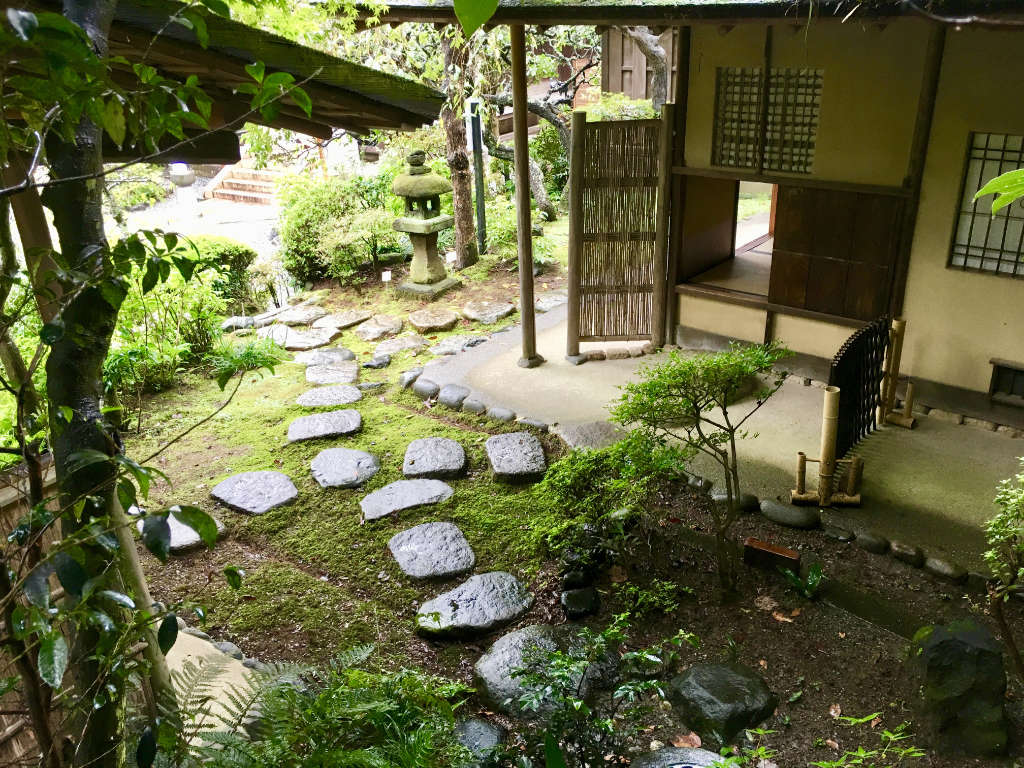
The tea garden is conceived as a preparation to leave one's daily world, with its share of suffering and problems, to enter another where tranquility reigns and where time no longer seems to exist. This is one of the reasons why this type of garden is enclosed, cut off from any outside environment. Palisades, walls, or evergreen vegetation (e.g. bamboo) will hide " unwanted views".
In this type of garden, you will see very few flowers, which tend to distract those who are preparing to enter another world, and which mark too much of the passing of time. At most, a few flowers arranged in IKEBANA can be placed in the tea house's TOKONOMA, which marks the end of the trip.
The tea garden should be considered as a real setting, the atmosphere should evoke a feeling of pay and relaxation. It is usually composed of several parts, with a path (the ROJI) in the form of chicanes, forcing you to slow down, like life that no longer follows its normal course. The visitor walks on slightly raised flat stones (TOBIISHI 飛石, flying stones) to arrive at a porch at the entrance to the tea house. Just before the tea ceremony, the host will have watered the stones, in order to "purify " the garden, while bringing a little freshness in summer.
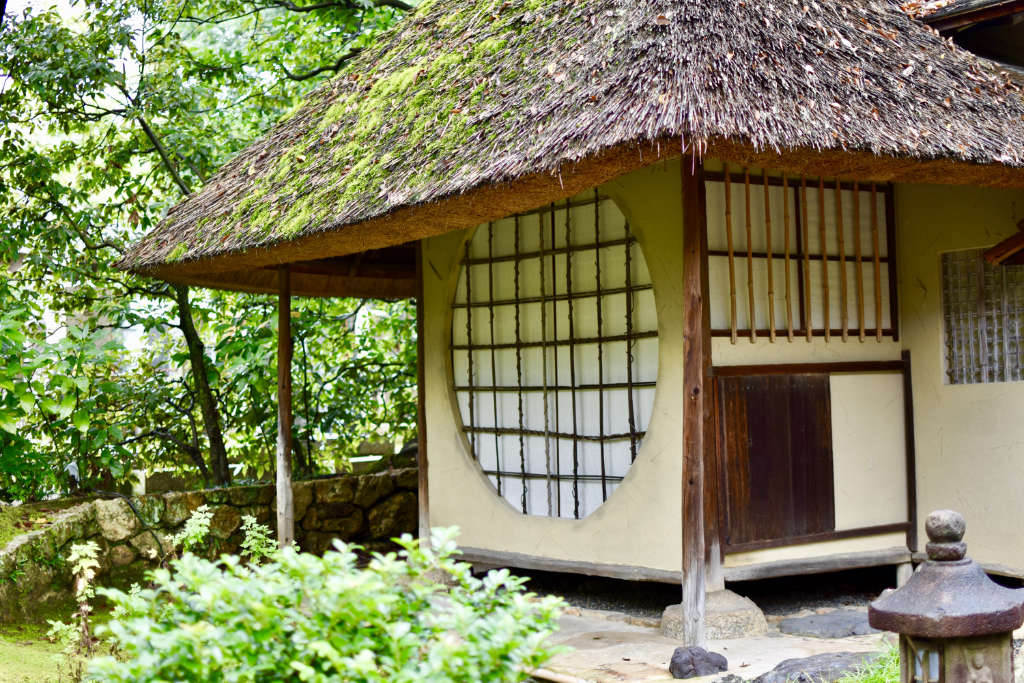
Tea masters (especially Sen no Rikyū) incorporated stone lanterns into the CHANIWA. Initially introduced to Japan from China, they brought above all a spiritual dimension, representing the harmony between man and nature. They are usually placed along the ROJI as well as near the TSUKUBAI (蹲踞, literally " cauldron where one squats "), allowing one to purify oneself before entering the tea house.
The tea garden cannot be seen as a whole, each time only a part of it can be seen. It is built to be walked through.
TSUBONIWA: The Courtyard Garden
It is a small garden that can be landscaped on a very small area, such as a patio, an inner courtyard, a small long space. The TSUBO-NIWA is ideal for a small unused area that is difficult to exploit and could hardly be developed.
The word TSUBO (坪) refers to a unit of measurement of surfaces, a square about 182 centimeters on each side. A TSUBO is therefore equal to just over 3.3 square meters (about the surface area of two tatami mats).
The TSUBONIWA is a small garden, surrounded by walls or fences. The elements are judiciously chosen; There are a few flat stones to walk on, a small pond, a lantern, a few carefully maintained plants. It is a universe in miniature that must sublimate the space.
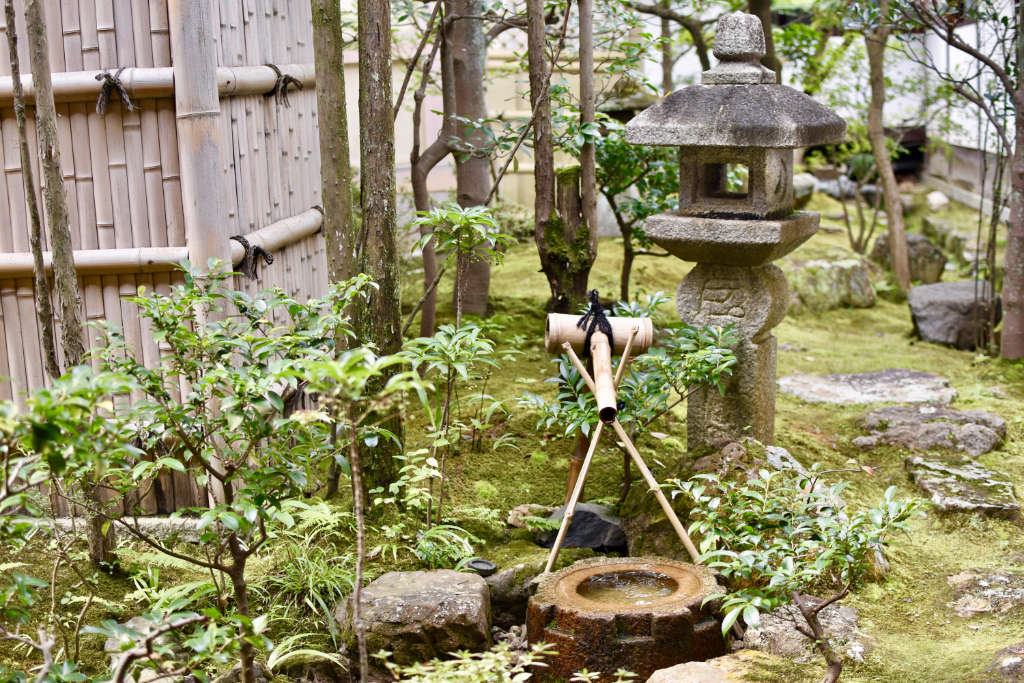
In Kyoto there are still many traditional wooden houses called MACHIYA. Through more than 1200 years of history, the atmosphere of Kyoto has been preserved through its traditional architecture, and these dwellings were built from the Japanese Middle Ages onwards by merchants and craftsmen living in the former imperial capital.
These houses are often a succession of narrow rooms extending deep into the street. We cross a MACHIYA through an alley that leads to the back, to arrive at the TSUBONIWA, a small green place inside the city, a place conducive to relaxation, which brings air and light inside the house.
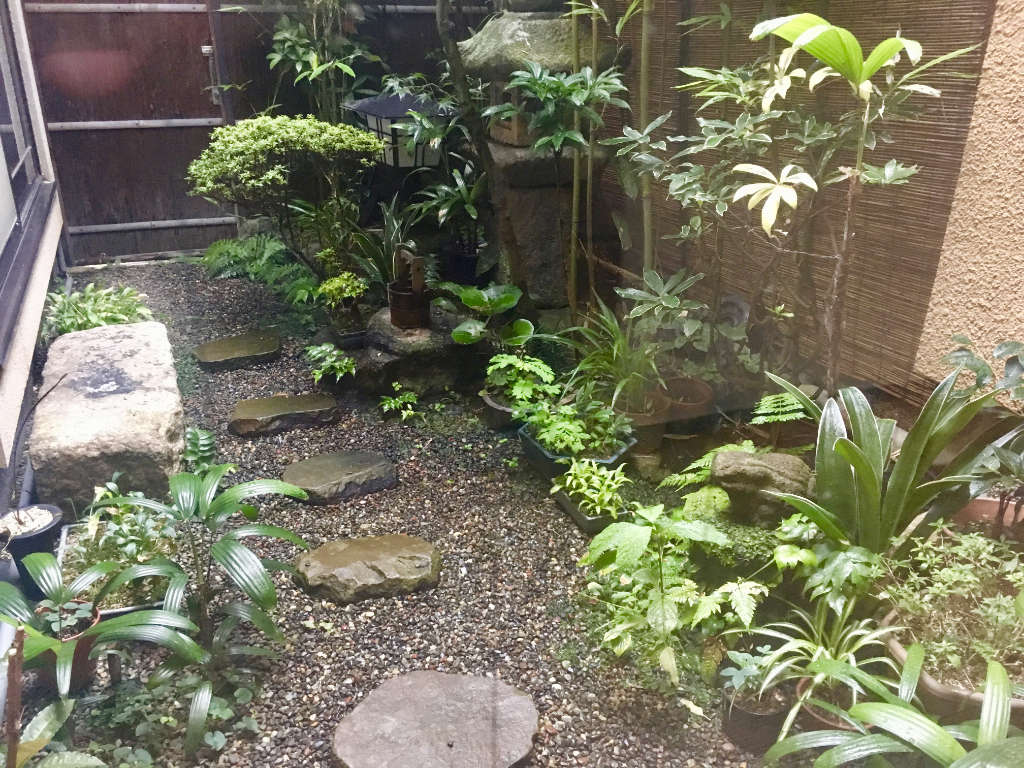
If we consider that the Japanese garden is a sublimation of nature, then the TSUBONIWA is a sublimation of the Japanese garden.
Spirit and Design Philosophy of Japanese Gardens
The purpose of this article is not to give you ready-made recipes that you can apply at home. Because often, these models do not apply to your garden or more generally to the space you have. Worse, some of these recipes are just a juxtaposition of " Japoniaiseries ", i.e. elements that are diverted from their context in an attempt to create a Japanese-like atmosphere.
On the contrary, our goal is to make you understand the spirit of the Japanese garden, to start from the ground up so that you can assimilate them and apply them at home.
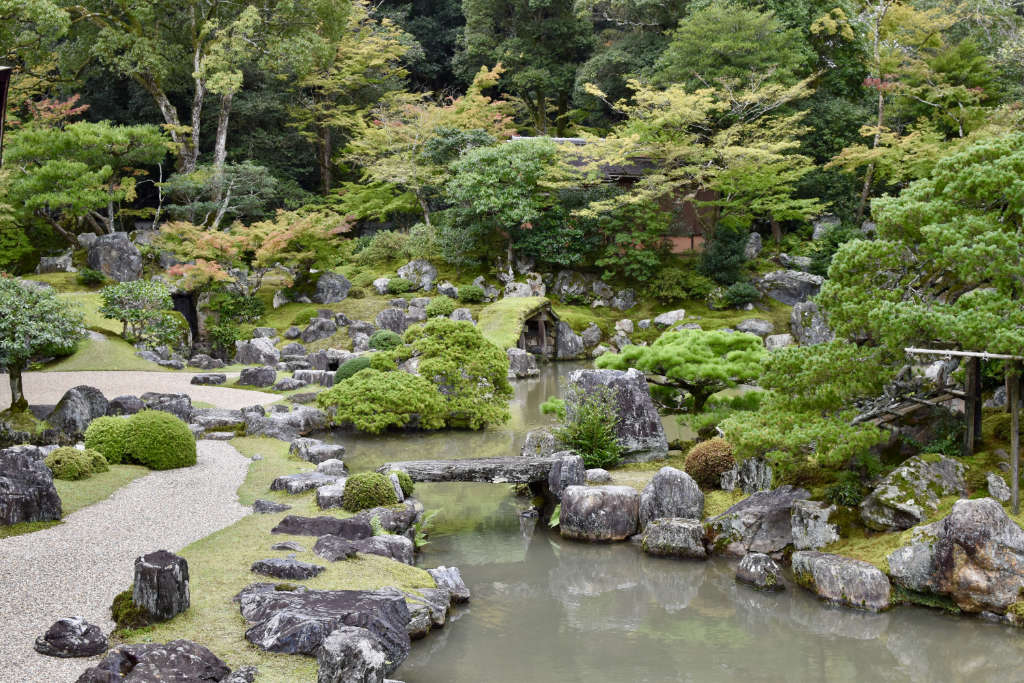
That said, let's stay humble, and designing a true Japanese garden is an art, and true successes outside the Land of the Rising Sun are rare. Let's start with the idea of a Japanese-inspired garden, which will respect the fundamentals and will not fall into crude traps.
It is tempting, when embarking on such a project, to think first of the plants and objects that will be used, rather to understand that a Japanese garden is conceived as a communion, or harmony, with nature.
Much more than a reflection of nature, it must be a work conducive to contemplation. But that doesn't mean it's a perfect example of balance and harmony. The Japanese garden is characterized by 3 essential concepts.
Asymmetry and odd numbers
For the Japanese, harmony is born from imbalance, chaos would in fact hide a fundamental harmony. On the contrary, even numbers, lines, and angles attract anything that is evil spirit.
Unlike formal gardens, which generally have straight lines and perfect symmetry, Japanese gardens play on asymmetry and curves, which are more natural and conducive to contemplation.
So forget straight paths, delimited by curbs, with trees in a good row. Stones like trees will always be planted either in groups of 2 or in odd numbers (and more specifically 3, 5 or 7), but will also be of different sizes. When 3 stones are grouped together, there will always be a large, medium, and smaller one.
The notion of empty space is also important (as important as it is in bonsai), in order to achieve some balance.
Conceal to invite discovery
This is another great feature of the Japanese garden, some elements are deliberately hidden in order to surprise the visitor. The garden reveals itself as you discover.
This makes it possible to give several characters to the garden, according to the different points of view of those who contemplate. It's a bit like looking at different paintings.
Even for dry gardens, which can be seen from a certain location, some elements may not be directly visible. The most popular example is the garden of Kyoto's Ryōan-ji Monastery. On 200m2 of white gravel, 15 moss-encircled stones were placed. But no matter where you are on the observation deck, you'll never be able to see them all at once.
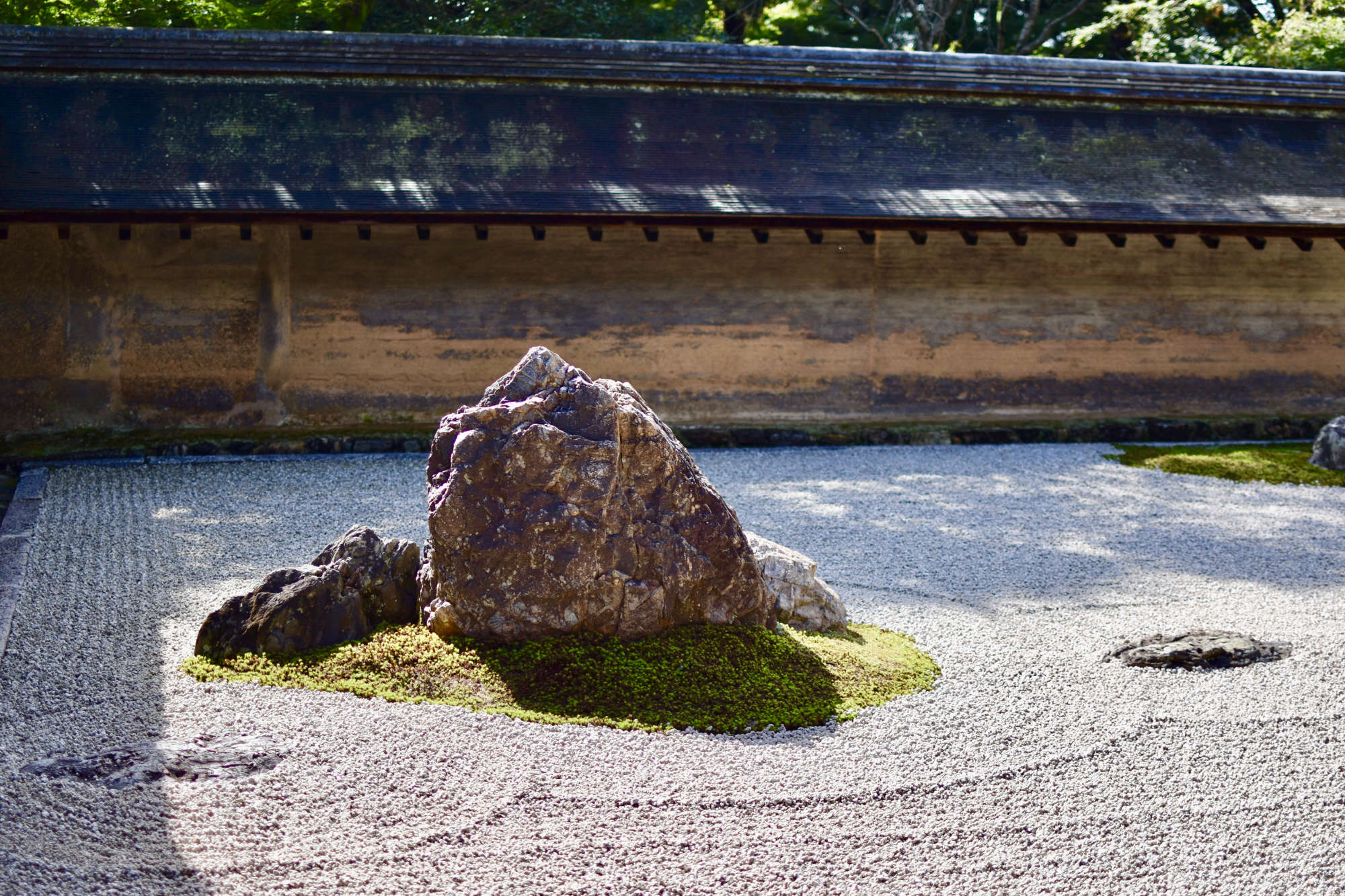
Concealment is also an essential component of the tea garden, in which the visitor wanders, and its elaborate structure aims to create such a special atmosphere that cuts us off from the real world.
Simplicity, the key word of the Japanese garden
The Japanese garden should be seen as a work in which human intervention is minimal, whereas it is the result of years of planning, arranging and pruning shrubs and plants, which aims to reproduce a natural landscape.
Unlike a European-style garden, a Japanese garden doesn't rely on multiple plants, decorative elements and bold colors. On the contrary, it should be a quiet space.
KANSO (簡素, literally simplicity, or purity) is a great principle of the Japanese garden, but also of the minimalist trend of modern architecture and interior design. It consists of eliminating clutter in favor of simplicity.
The order achieved through KANSO brings a sense of peace, calm and harmony to the garden. All elements, both plants and objects, should be minimal and simple. Don't try to overload the space and ask yourself each time if this element is really necessary. Don't add a lantern or pond because you feel like it, but because they have a place and a well-defined purpose.
What elements make up a Japanese garden?
All Japanese gardens have three essential elements, which are stones, water, and plants, each of which are symbolic elements.
Water, the fundamental element of human existence
Water has always been at the heart of Japanese garden design. The first ones created in Japan were organized around a lake or pond as the central point. The ponds were irregular in shape, dotted with large rocks, and always an island rose from the surface of the water.
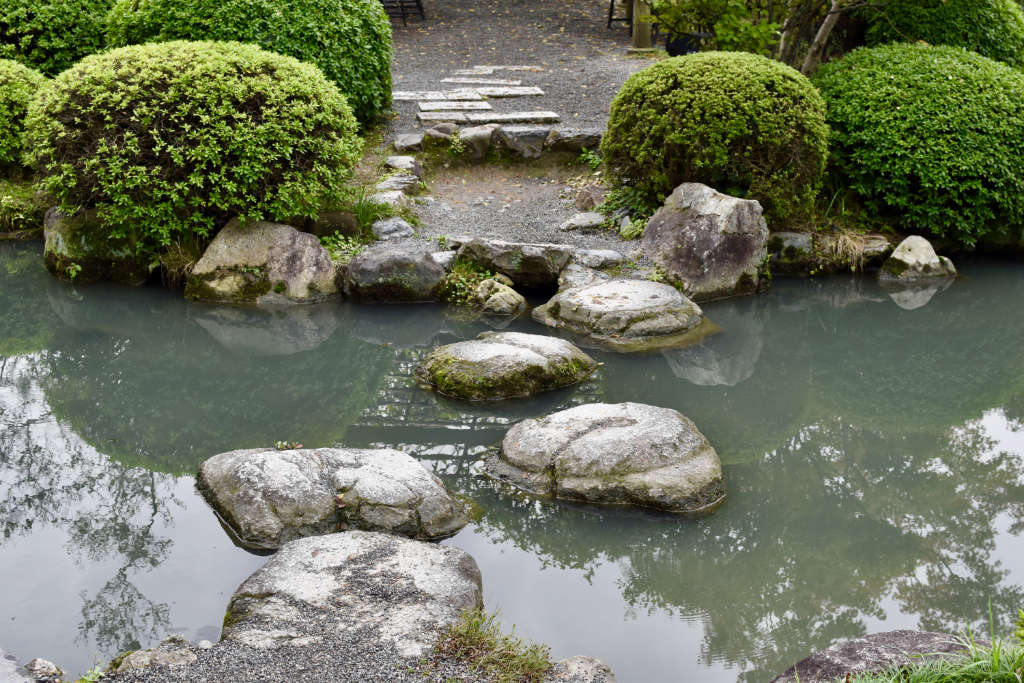
Water contributes to the expression of nature and symbolizes renewal, calm, wonder, and continuity in the afterlife. The element can come in many forms: ponds, but also streams, waterfalls or simply basins. Many gardens connect distinct sections through a stream, a series of interconnected ponds, or small waterfalls.
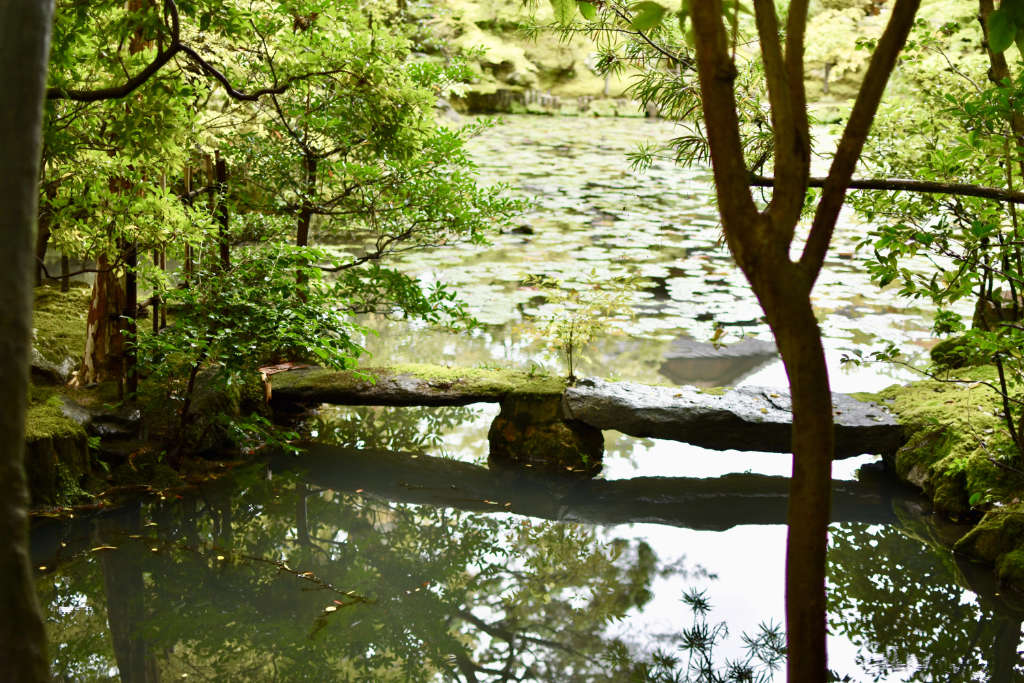
In early gardens, still heavily inspired by Chinese culture, the YIN energy of the water was believed to interact and compensate for the YANG energy of the stones, especially in waterfalls or in ponds with a central stone rising from them.
In dry gardens (KARESANSUI), water is not physically present but suggested by an area of fine white gravel, carefully raked. Standing stones symbolize islands and the patterns on the gravel evoke the waves that wash up on the shores of the islands.
Stones and rocks, an evocation of the mountains
Stones are the subject of special attention in Asian philosophy. A symbol of durability and the omnipresence of the forces of nature, they anchor the garden to the ground and give it its specific personality.
The stones are arranged according to strict rules, depending on their shape and size; They are often paired by 3, 5 or 7, with a contrast in their size. The stones create landforms, producing hills and valleys giving rise to waterfalls, streams and ponds.
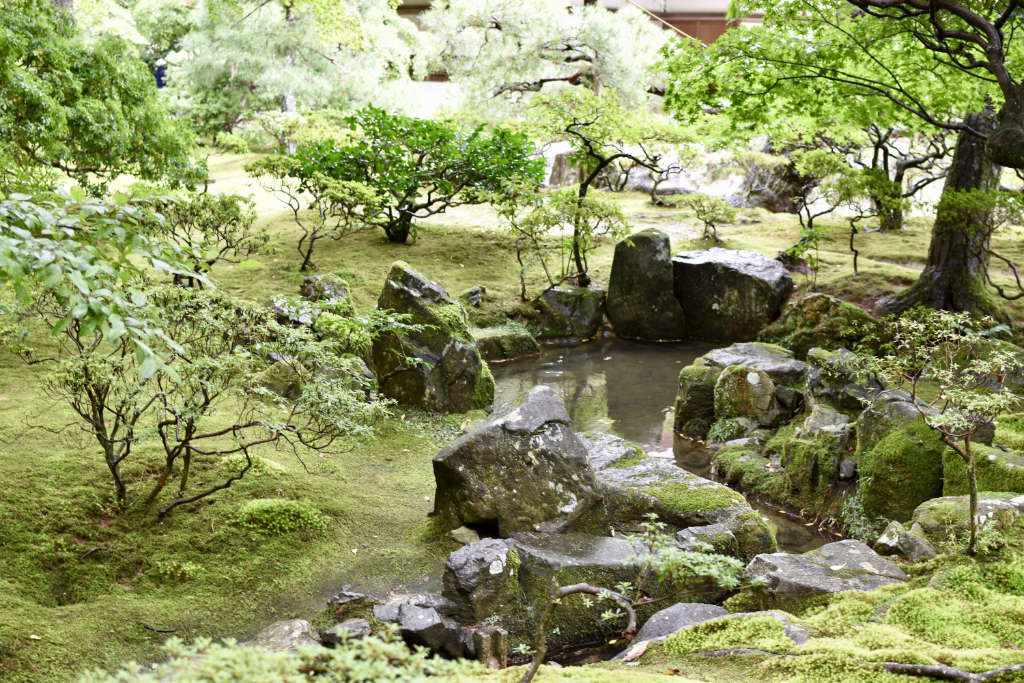
Their placement, in relation to other elements and components of the garden, can produce miniature landscapes, realistic in appearance, with rocks forming small mountain ranges. Stones are also arranged to form the edges of streams and artificial ponds, taking great care to bring out the small details reflecting the natural state.
The importance of incorporating depictions of mountains into a Japanese garden stems from the veneration of mountains, and the belief that mountains are concentrations of KI energy from the natural world.
As an element, the rock is classified by the Chinese as YANG because it is strong, durable, and masculine, but the best garden stones also exhibited characteristics of rarity and delicacy.
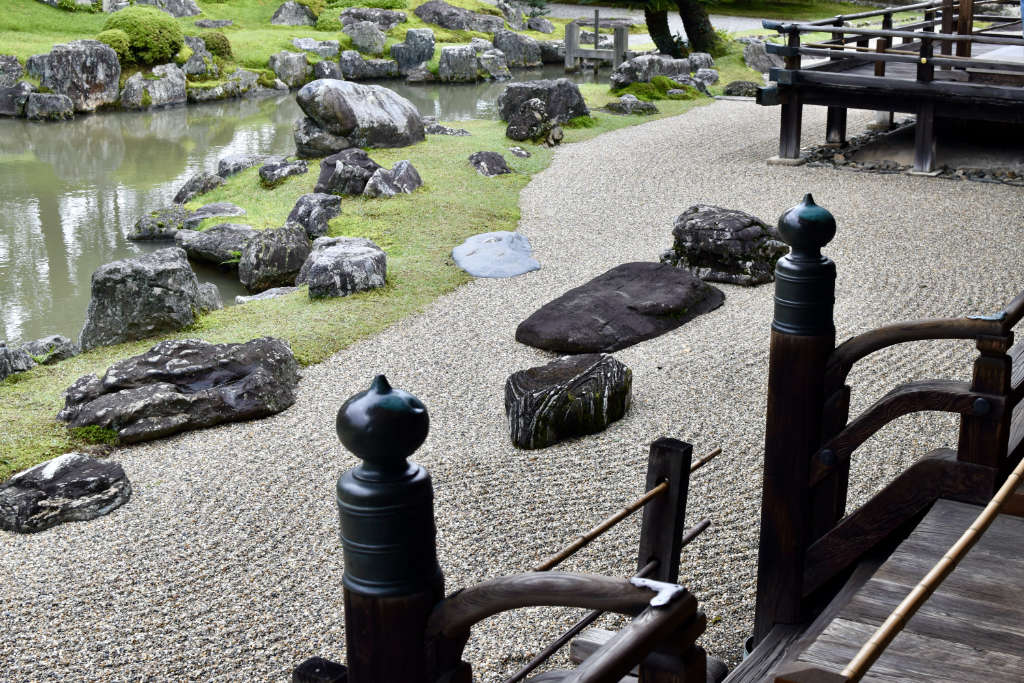
The type of stone to be used is one of the most important elements in the design of a Japanese garden. The most prized stones are the heavy, sturdy stones that seem to defy gravity and hang in the air like clouds.
Different types of paths
Paths, walkways and passageways are widely used in Japanese gardens. They are a way to guide the visitor to a meaningful object or place. They also control the progression of the movement from step to step.
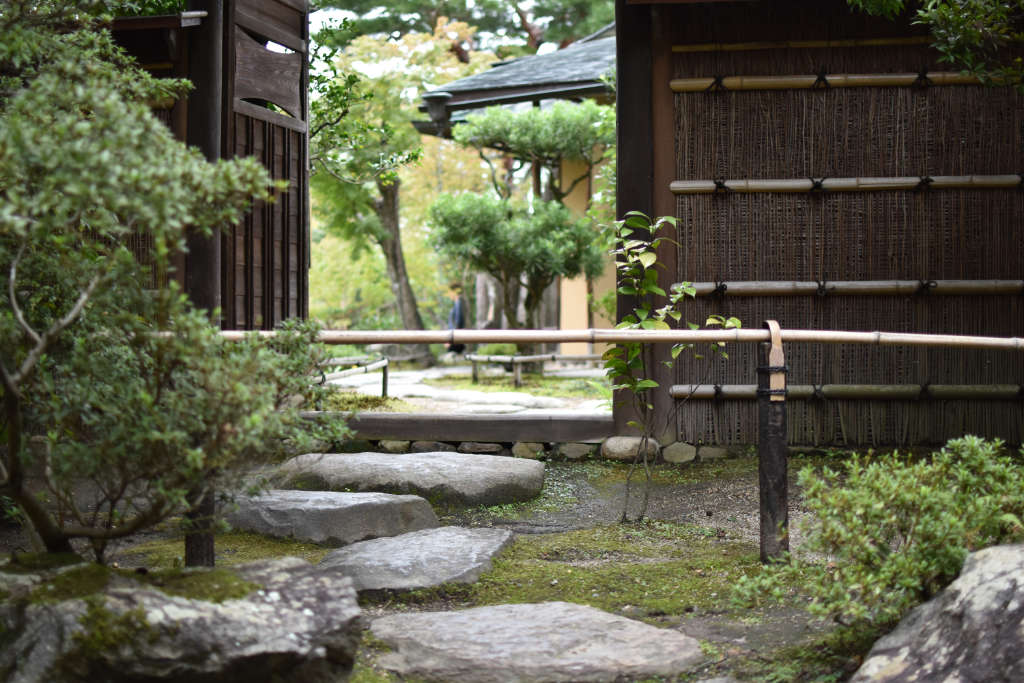
There are different types of paths, and the most formal is created with its stones cut in a straight line, in order to delimit large walkways. The appearance of tea gardens has gradually given rise to new types of paths, which are more informal and require you to slow down, allowing visitors to relax and meditate.
The stones are then semi-buried by positioning the flat side on top. This is known as " not Japanese ". When they are smaller, they can also be joined together to form aisles or stairs.
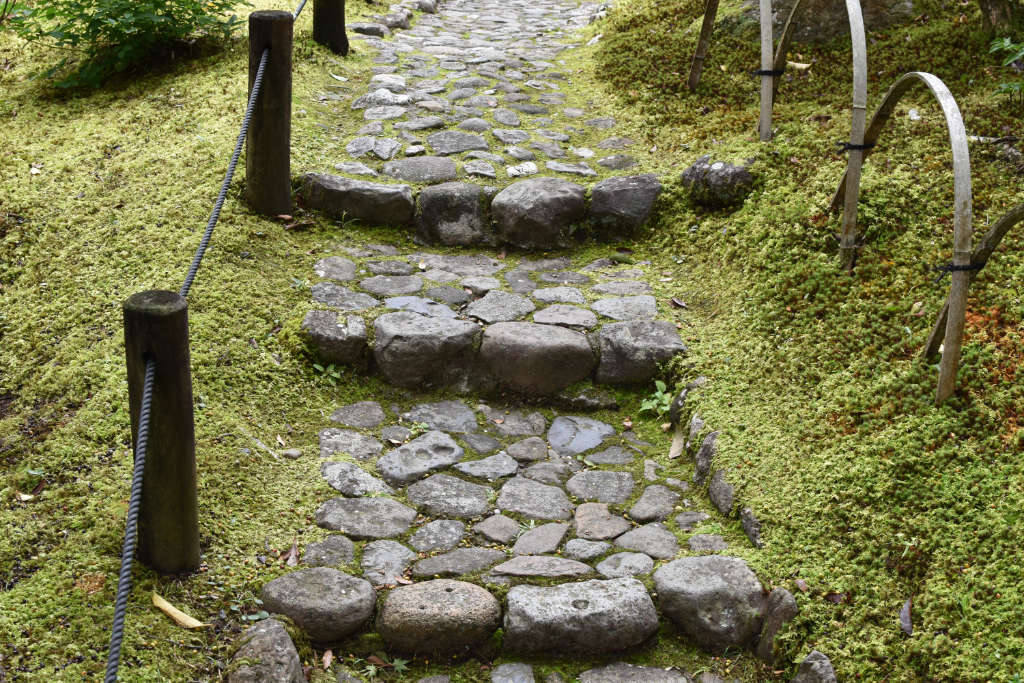
Plants in the Japanese Garden
The Japanese show a natural ability to interpret the charm of plants and flowers in order to express their joys and sorrows. Their communion with nature is manifested through elaborate symbolism and that is why their interest in the plant field has become a real passion.
The care given to plants in a Japanese garden is like that given to bonsai: living plants are shaped to the exact shape necessary for the desired symbolic or graphic effect.
Many people think that you can only use a limited number of plants in a Japanese garden. These are often the same people who think that you can only make a bonsai with a few Japanese species. More than the gasoline, it's what you do with it that's important.
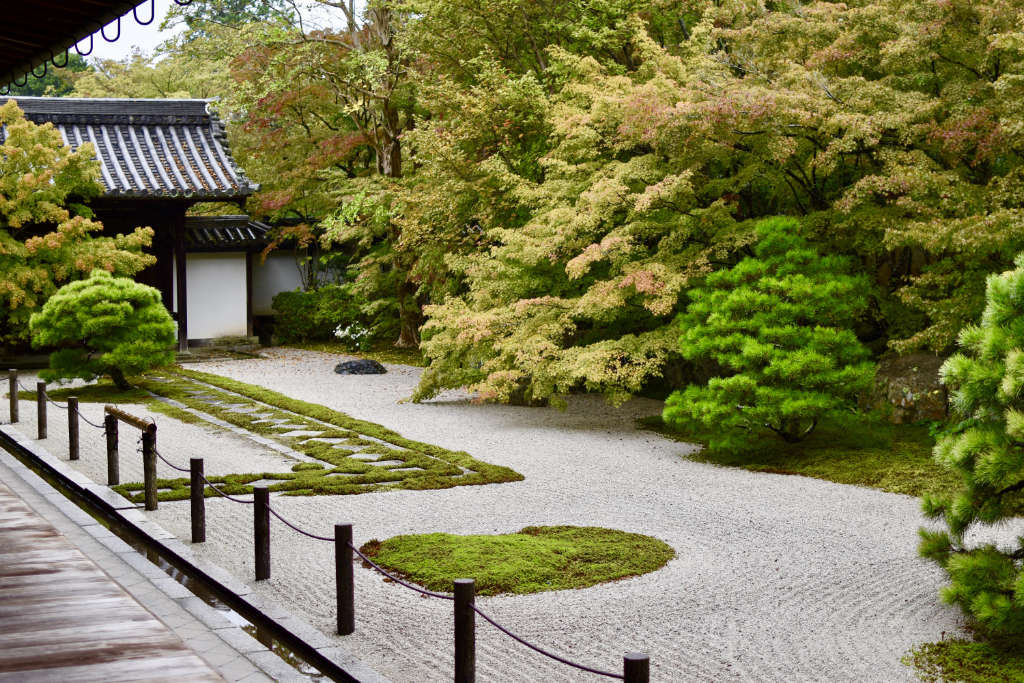
Cherry and maple trees are plants commonly used for their periodic appeal, in the spring and fall. It is important to choose and place them correctly to emphasize these characteristics.
Conversely, bamboo, pine, and plum trees are also popular because of their exceptional beauty that appears during the winter season as other plants become dormant.
NIWAKI, the "Japanese-style pruned trees"
The Japanese are used to harmonizing the smallest details of their environment with each other. This habit is usually reflected in their gardens, with trees that seem to blend in with everything around them. This art is what we call NIWAKI, which literally translates to " garden tree."
In its essence, NIWAKI is the art of pruning these garden trees to harmonize them with their surroundings, in order to fit into the style of the garden. In other words, it's about balance and harmony.
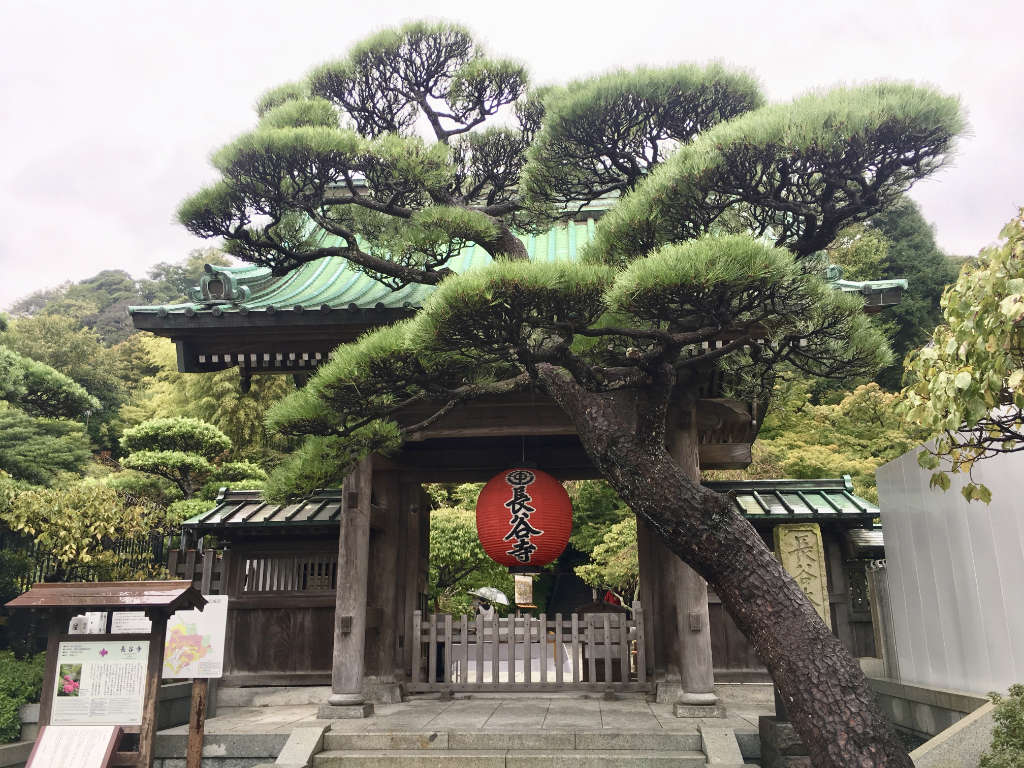
The idea of NIWAKI is to keep the trees in proportion to the rest of the garden, limiting their growth, cutting off the branches, pruning different parts in order to harmonize with the rest. The goal is to create an idealized version of a tree in nature.
Even though the art of NIWAKI was imported from China, it was heavily influenced by Shintoism and Buddhism; The fundamental core of this practice is respect and worship of nature. And contrary to popular belief, the style of these trees is not artificial but is the evocation of very old trees in nature, which often have few branches but are very dense.
In practice, many of the techniques used to form a NIWAKI are similar to those used in the art of BONSAI. And it's normal, the cultivation of our small potted trees, and in particular all the pruning techniques, are directly derived from the art of NIWAKI.
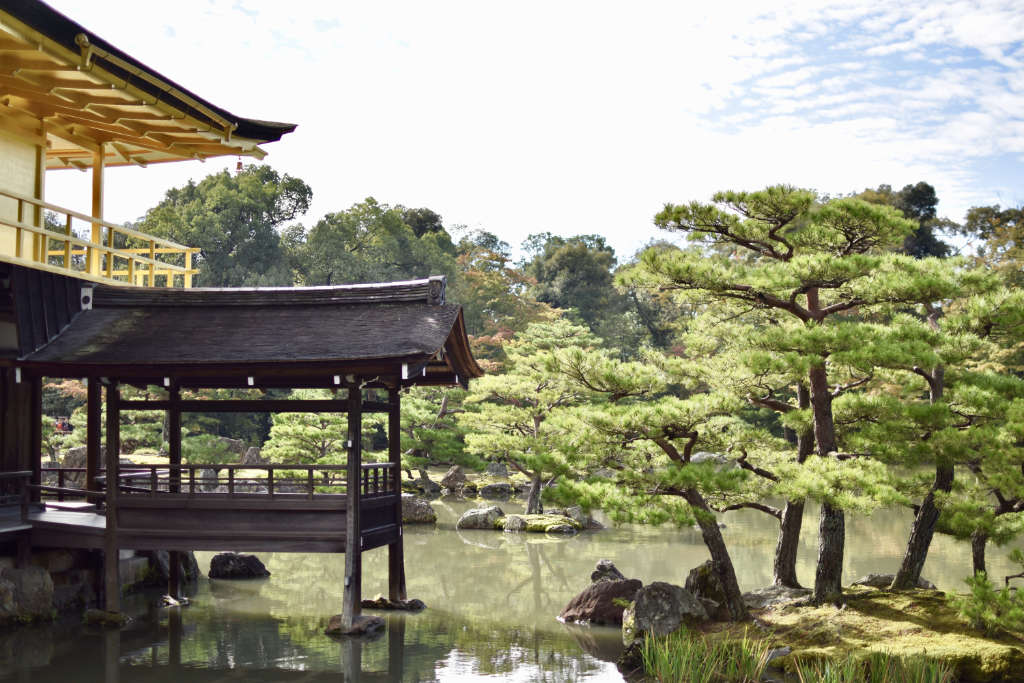
The most prized trees in Japan are pines, both for their timeless appearance through the seasons, as well as for their symbolism of power, longevity and wisdom. They are the most emblematic with their " cloud-cut" trays . But many species are also pruned in NIWAKI, in slightly freer shapes, especially maples.
For the sake of simplicity and to stay in the spirit of KANSO, choose one or two beautiful trees that are already mature, rather than several small ones. At the nursery, we have a selection of NIWAKI, Japanese pines and maples pruned and ready to become the centerpiece of your future Japanese garden.
» See our selection of NIWAKI in the online shop
TAMAMONO and KARIKOMI, pruned shrubs
Pruned shrubs are another important feature of Japanese gardens. A TAMANONO is a shrub pruned into a slightly flattened ball. Even if there are points in common with the art of topiary in French gardens, the shape sought here is a half-sphere, and not a ball shape. It should be at least twice as wide as it is tall, with the widest part touching the ground.
Shrubs pruned in this way appear to sit on the ground, as if they were stones deeply buried. This basic shape adds a dimension, present throughout the year, that contrasts with the horizontality of the ground and the verticality of the vertically growing trees and shrubs. Its repetition brings both mass and stability to the garden, and plays an important role in establishing the simplicity and tranquility characteristic of Japanese gardens.
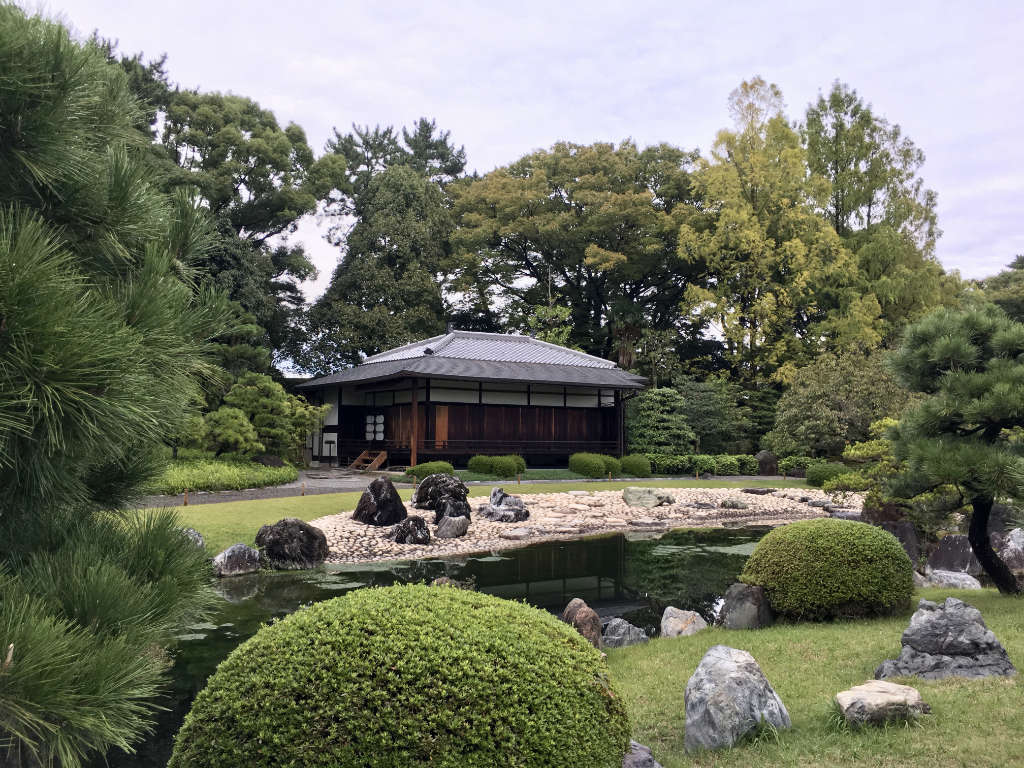
Shrubs formed in TAMAMONO should be separated from each other, but if they start growing together, it is possible to create wave shapes known as KARIKOMI. These "waves " are simply long lines of connected TAMAMONO shrubs.
Shrubs should be positioned in a zigzag pattern, with different heights, rather than in a straight line, as straight lines are not natural and instead refer to human constructions (such as walls).
A KARIKOMI is made up of only one species, and in Japan azaleas are the most prized. For us, the ideal shrub is boxwood, which densifies very well, despite its relatively slow growth. So don't hesitate to use good-sized shrubs right away.
A moss-covered floor
Turf is rarely found in Japanese gardens (except in a few modern creations). Foams are preferred for their finesse (and their much less restrictive maintenance). There are many varieties of moss and when you visit Kyoto, don't miss the Kokedera, a Buddhist temple nicknamed " the moss temple".
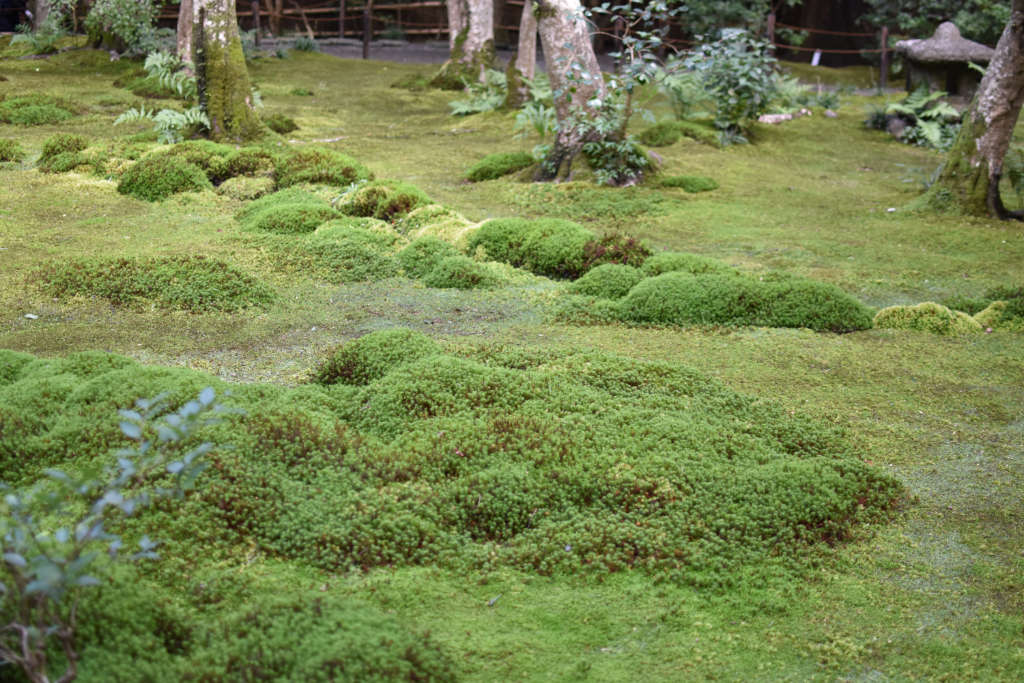
Gio-ji, also in Kyoto, is also a remarkable example of a garden entirely covered with mosses. But it is also important to understand that the climate of Japan, and more specifically the local climate of these gardens, lends itself well to their cultivation. Gio-ji is located at the foot of the mountains, with a very humid atmosphere.
TSUKUBAI, the traditional place of purification inside a tea garden
Upon entering a tea garden, you walk on the path of the ROJI, and you will come to a special place called TSUKUBAI. A basin of stone water for purification is surrounded by other stones assigned to specific purposes, most often based on established procedures for the tea ceremony.
The term TSUKUBAI (蹲踞) comes from the Japanese verb " tsukubau ", which means to squat, and refers to the fact that one has to squat or bend down to use the pelvis.
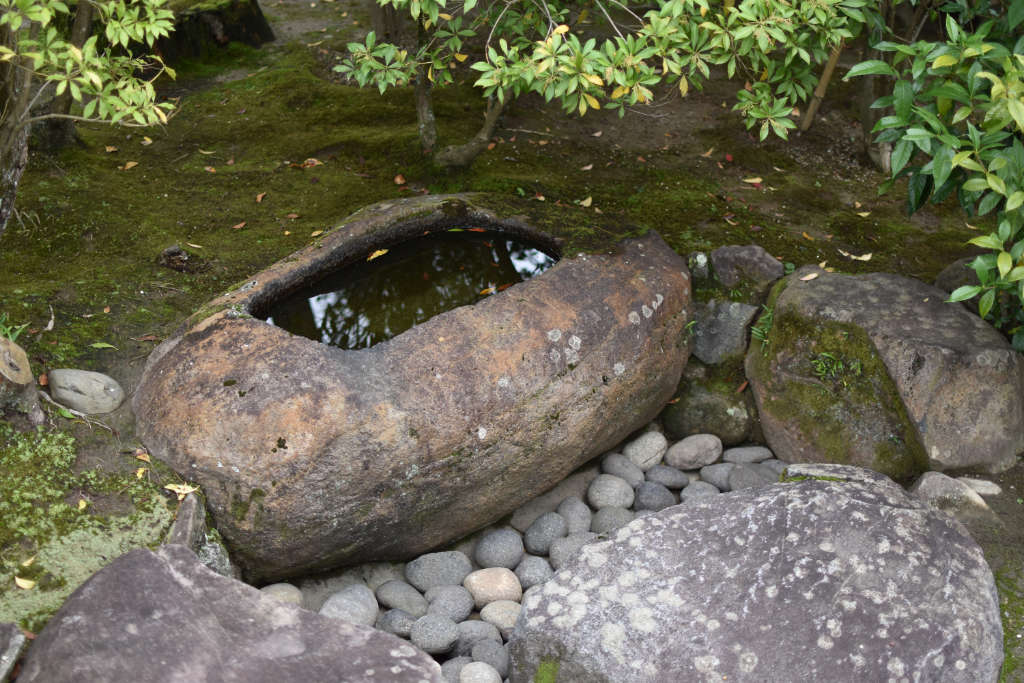
The TSUKUBAI is usually surrounded by some vegetation, so that the place is slightly shaded and moist. Ferns and other low-growing plants are an ideal addition. At the back, you can place shrubs but stay in green tones so that they don't distract attention.
Shishi Odoshi
The SHISHI ODOSHI is also known as deer hunting, as it was originally composed of a pendulum system in order to emit a snap to keep the animals away.
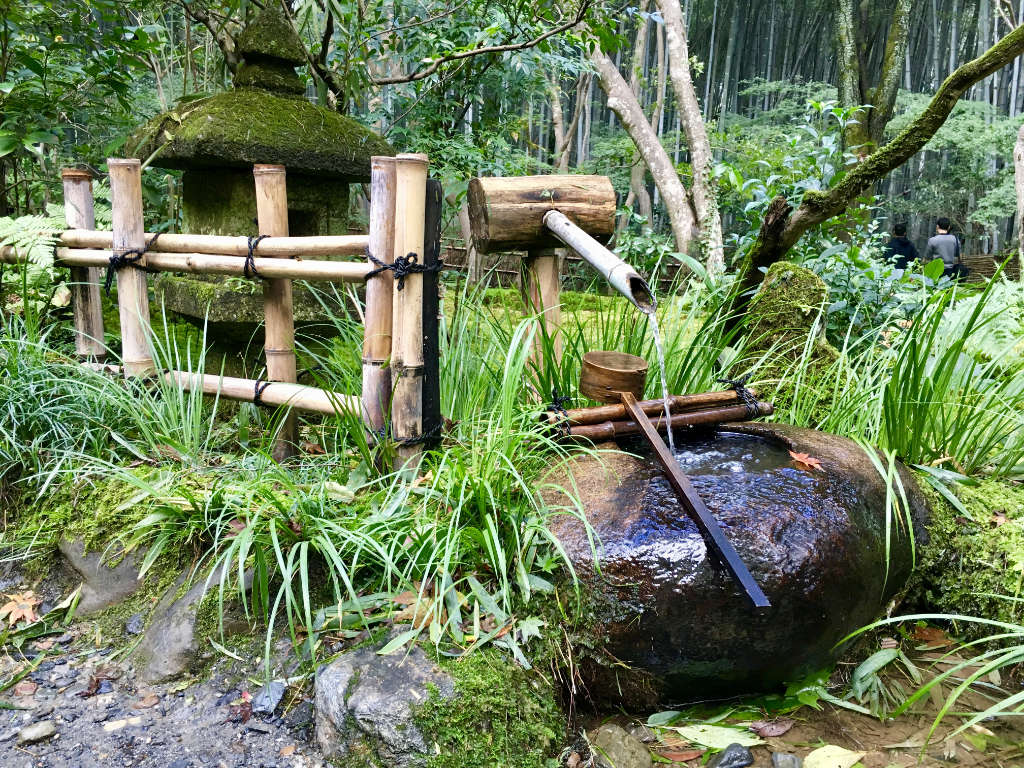
However, it quickly turned into a simple decorative element that became fixed. It is more commonly a bamboo rod letting a trickle of water flow into a small basin or TSUKUBAI.
Lanterns
For many, stone lanterns are inseparable from Japanese gardens, but this wasn't always the case. They appeared in China during the Tang Dynasty and were used in a religious context. They were then introduced to Japan during the 8th century, during the Nara period, and then during the Heian period.
There are several styles of lanterns, which differ both in size and shape. The best-known type is certainly the KATSUGA lantern, which came from the eponymous shrine in Nara.
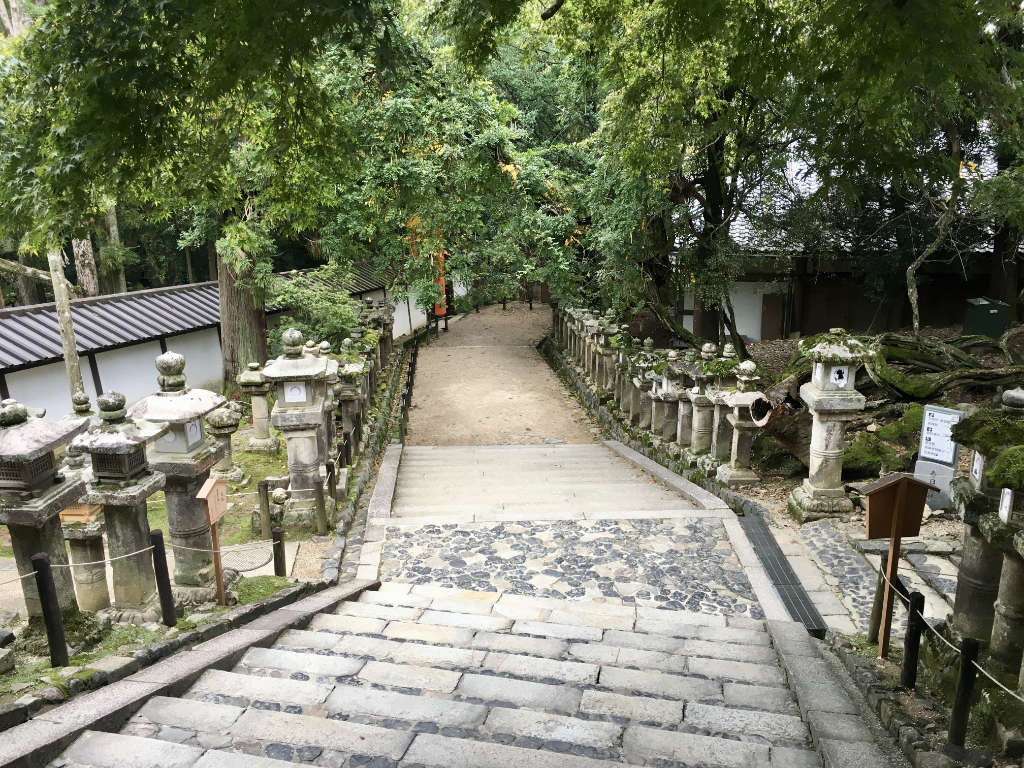
With the advent of the tea ceremony, lanterns became popular in tea gardens. When the ceremony took place in the evening, it was necessary to illuminate the too dark parts of the trail as well as the TSUKUBAI.
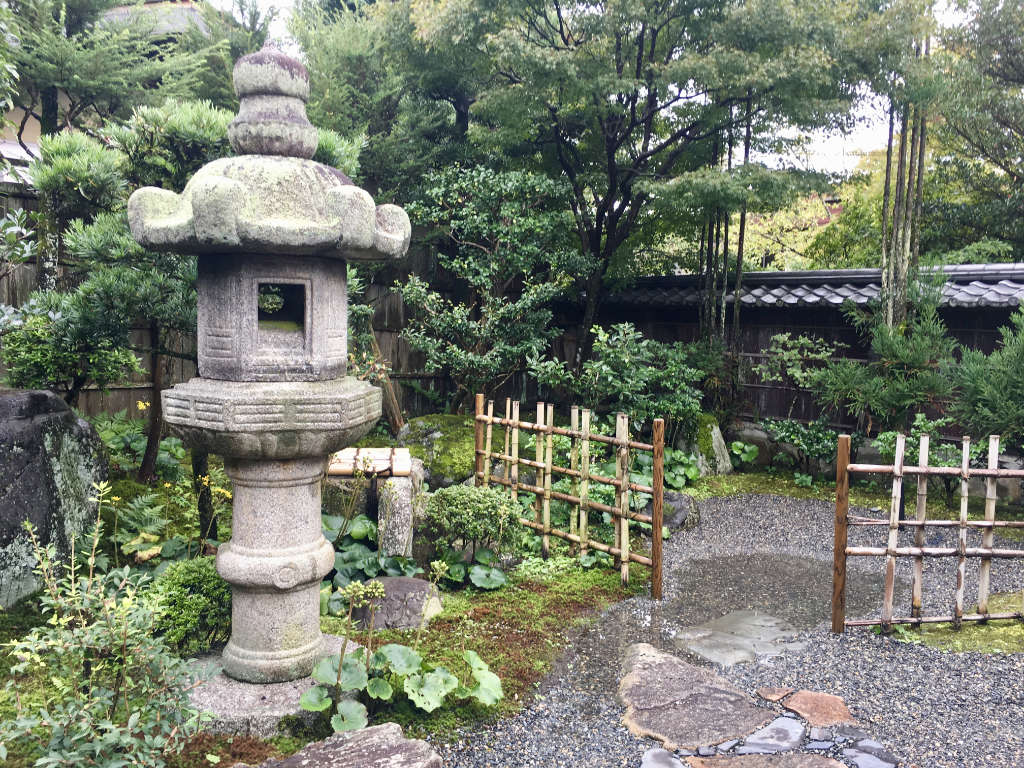
From the tea garden, the lantern has made the leap into other garden forms and is now an integral part of the Japanese garden, while in China, stone lanterns have become rarer. This is one of the examples of how Japan has adopted elements from China, developed its own style, whereas in China the culture has evolved in a different direction and this element can now be considered almost exclusively Japanese.
Bamboo fencing
To create a place secluded from the outside world, a tranquil environment conducive to contemplation, it is essential to fence off a garden. Also, the Japanese gardens have divisions, the space is divided into several places, allowing the visitor to gradually discover the different views.
Natural materials, such as wood and especially bamboo, are commonly used for fencing.
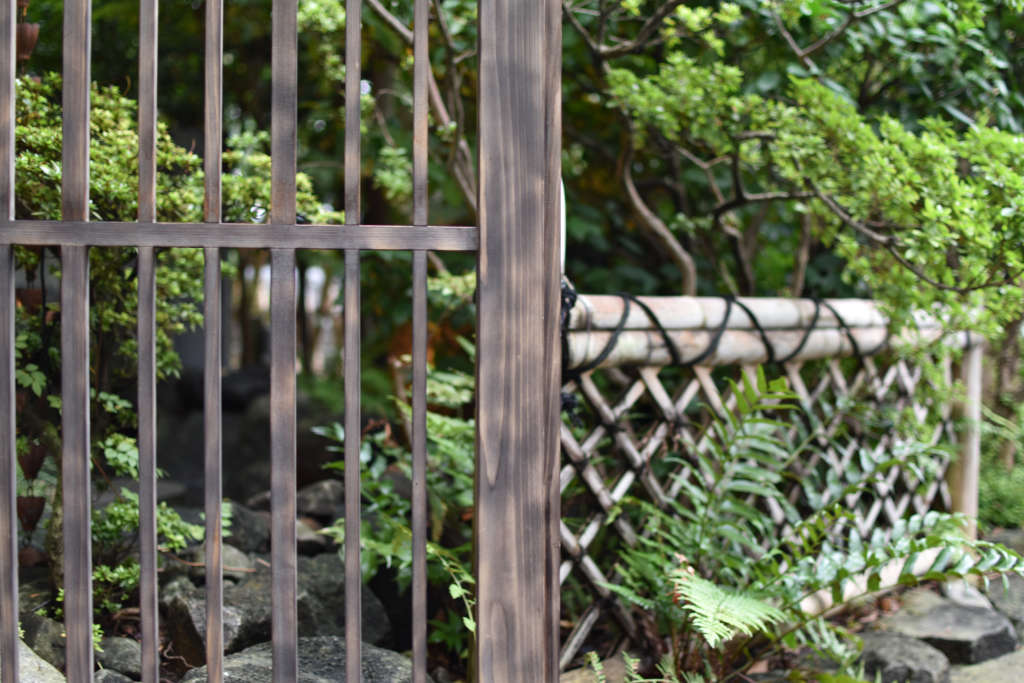
Bamboo was a feature of gardens in the Heian period, it was associated with the quality of coolness in summer and was often planted on the north side of noble residences.
Bamboo was considered in both China and Japan to have the moral qualities of resilience and courage. Fencing has become a true art form with many types of fence patterns and variants. Some of them date back to the 16th century.
Bridges, much more than a place of passage
Bridges did not begin to appear in Japanese gardens until the Heian period. Yet, they have become one of its characteristics, both for practical reasons and for the spiritual meaning behind these structures.
Bridges obviously have a close relationship with water (ponds, streams). They have become, in their simplest form, a handy tool for moving guests from one "island" to another.
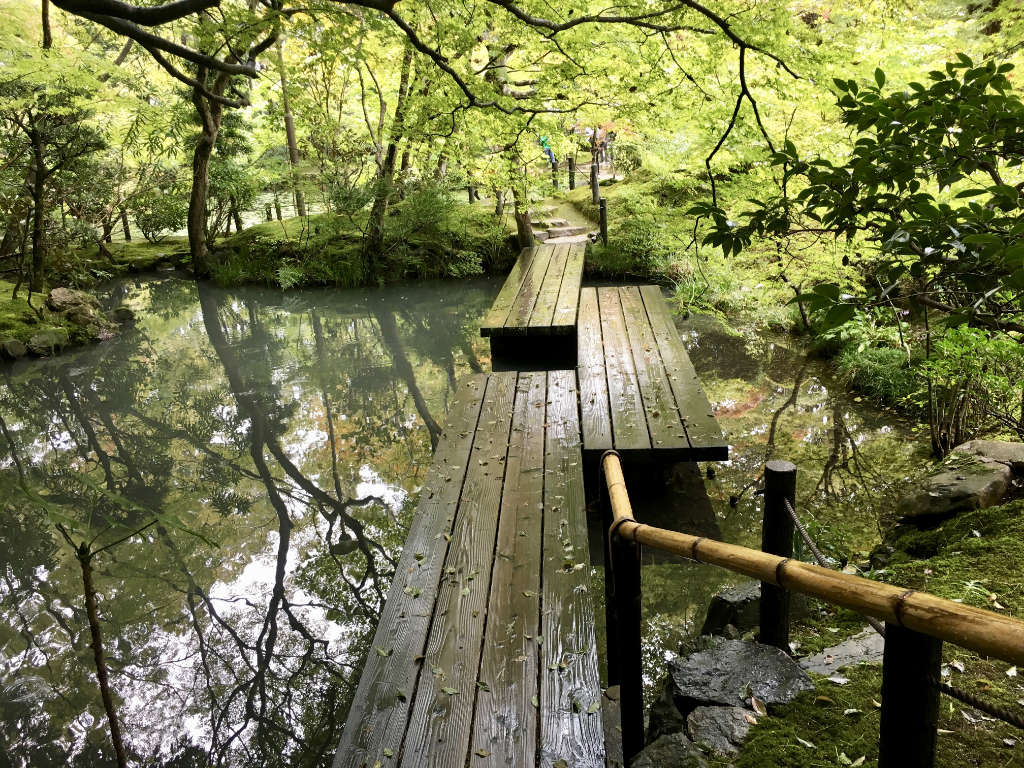
However, the true meaning of a Japanese bridge is not only practical, but has strong spiritual connotations. The passage over the bridge symbolizes the mortal world's journey to the afterlife and the abandonment of its burdens. Through this journey, the individual experiences a symbolic sense of purity, inner peace, and oneness with nature.
The most iconic of all Japanese bridges is certainly the red arched bridge. Although it is loaded with the same symbolism as the other bridges, the color red has spiritual connotations on its own.
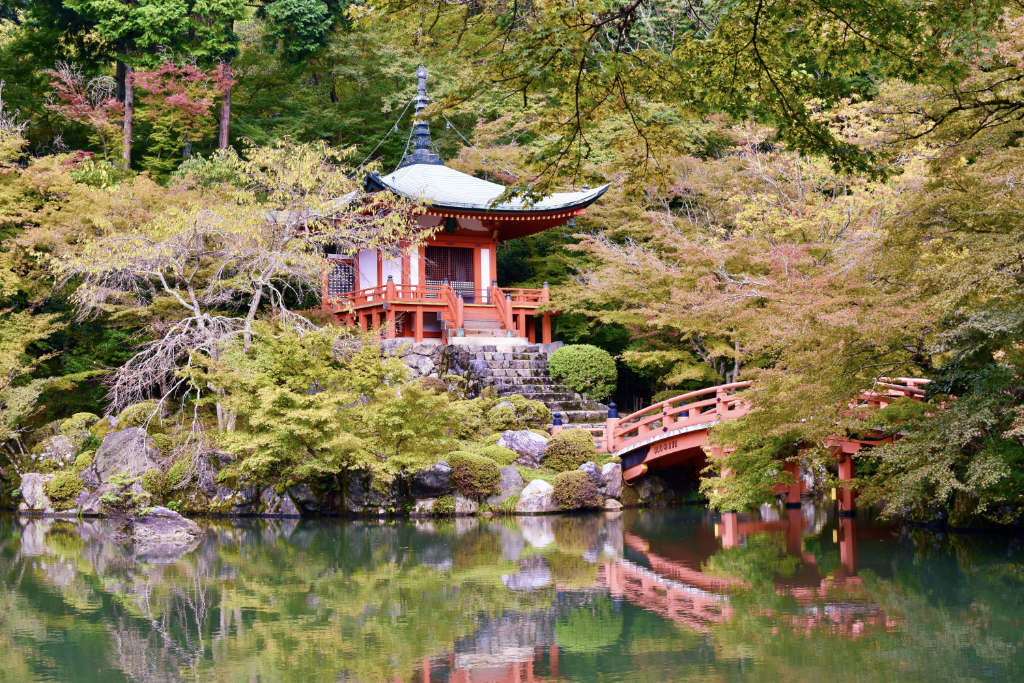
Red is an important color in Japanese culture, it represents wisdom, transformation, and all that is sacred. Red is also a color that is strongly linked to Zen, and therefore further encourages the individual to reject their attachment to physical things as they travel across the bridge.
Now it's your turn?
Here we are at the end of this more in-depth discovery of the art of the Japanese garden. This article is intended to be different from the topics generally covered by other sites. Because it seemed important to us, if not to understand, to make you touch the spirit of the Japanese garden by going back to its history, its evolution, and its fundamentals.
Some aspects deserve to be even more detailed, but for the Japanese garden as for the bonsai, a lifetime would not be enough to master all the subtleties.
Although in Japan it is quite rare to see bonsai in a garden, many French bonsaikas have embarked on the development of a small Japanese-style corner to showcase their bonsai collection. And we can only push you in that direction.
If you need a NIWAKI, we have been growing maple and pine trees in large pots for years. From the beginning, they were trained to take place in a Japanese garden. And what's more, we also take care of the delivery!


 Production of French Bonsai
Production of French Bonsai















